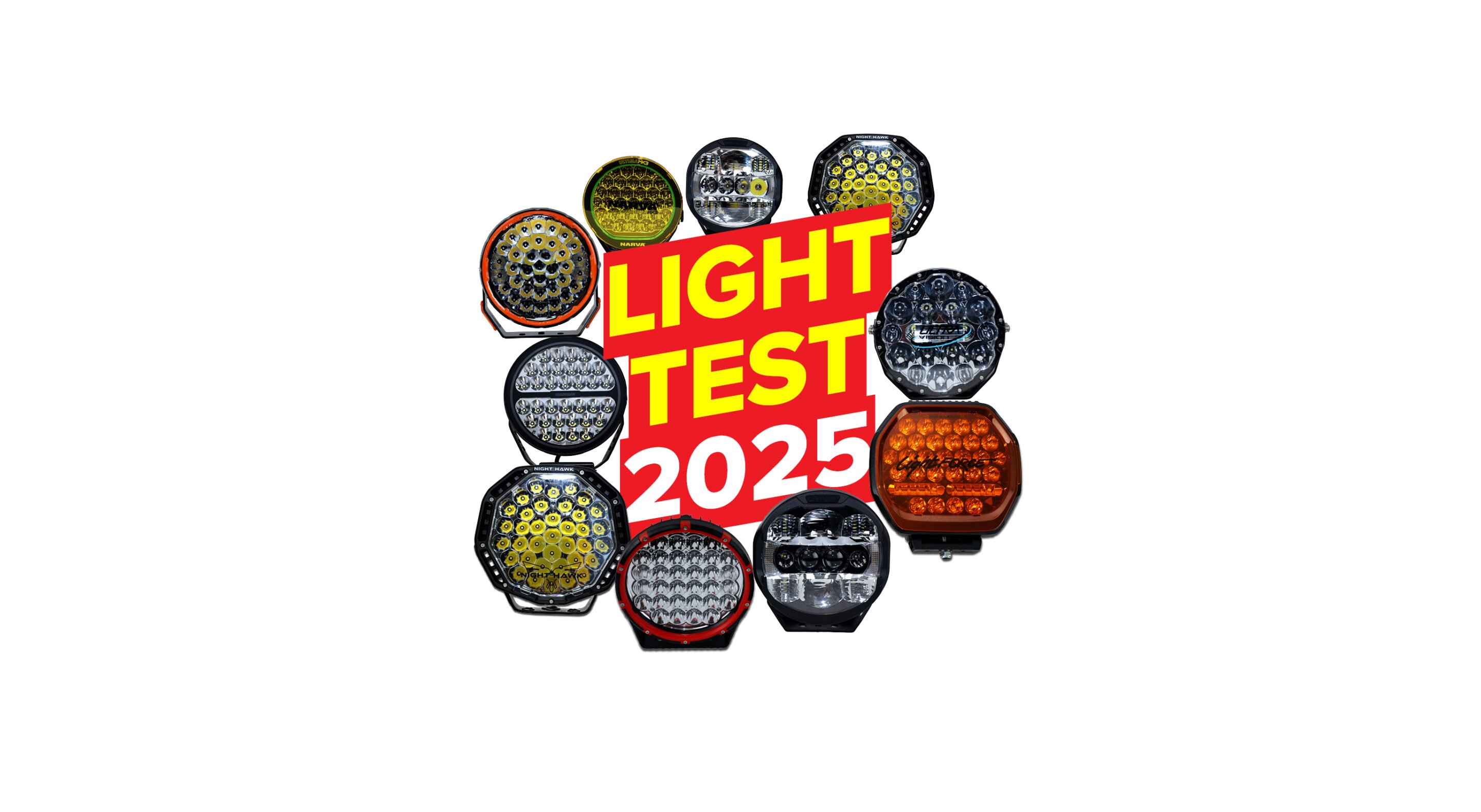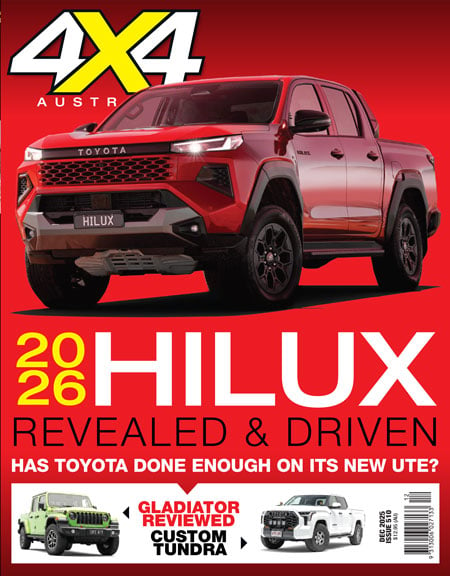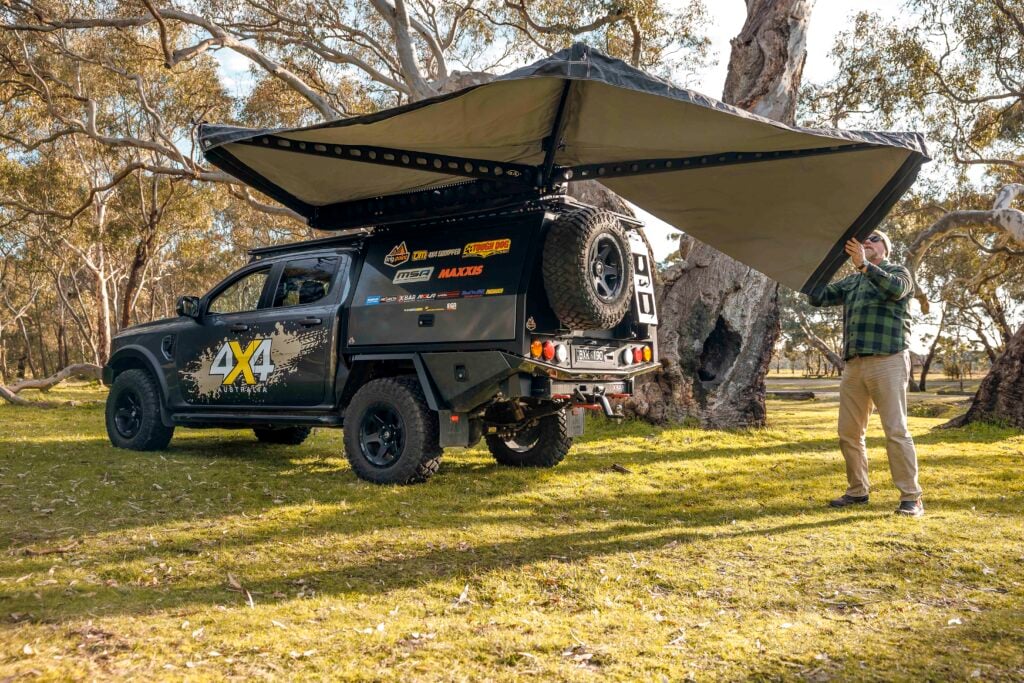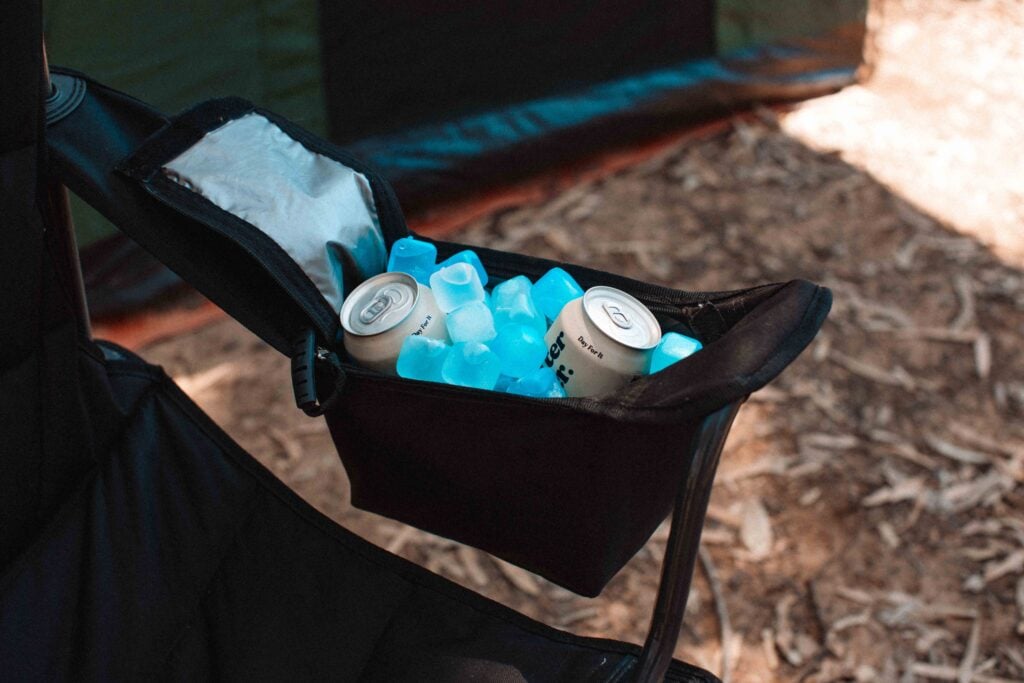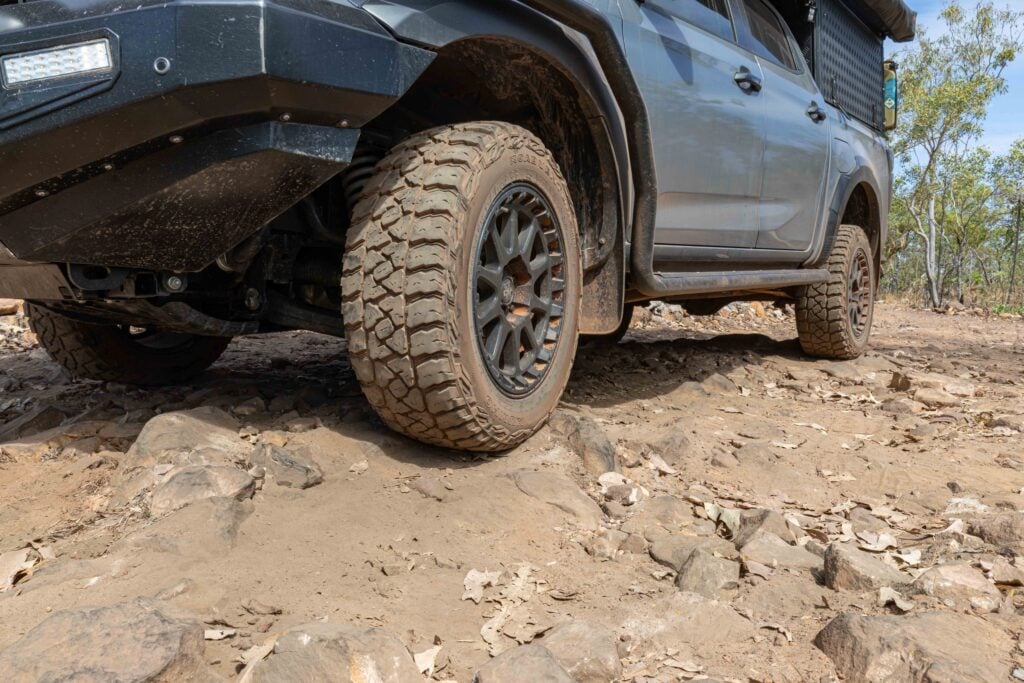Back in the 1980s, when I first started exploring on- and off-road, halogen lights were the go-to driving light for most 4WDers.
They came in two flavours – round or rectangular – and if you wanted more punch, you’d swap in a higher wattage bulb and hope it didn’t melt the housing. I used to carry spare bulbs for roadside changes on corrugated tracks and to improve vision I even tried to add extra lights on to an already crowded bull bar. At one point, I even tried shifting my seat forward for a better view down the track – it didn’t help.
All that is little more than a memory now. Technology has massively improved our after-dark driving. Brightness, beam distance and spread, longevity, sizes, shapes and even colours – there’s something to satisfy even the fussiest 4×4 owner.
JUMP AHEAD
- LED advantages
- LED limitations
- Testing method
- Key terms and specs
- Key features of a good light
- The testing track set-up
- Driving light line-up
- Verdict: All of the winners
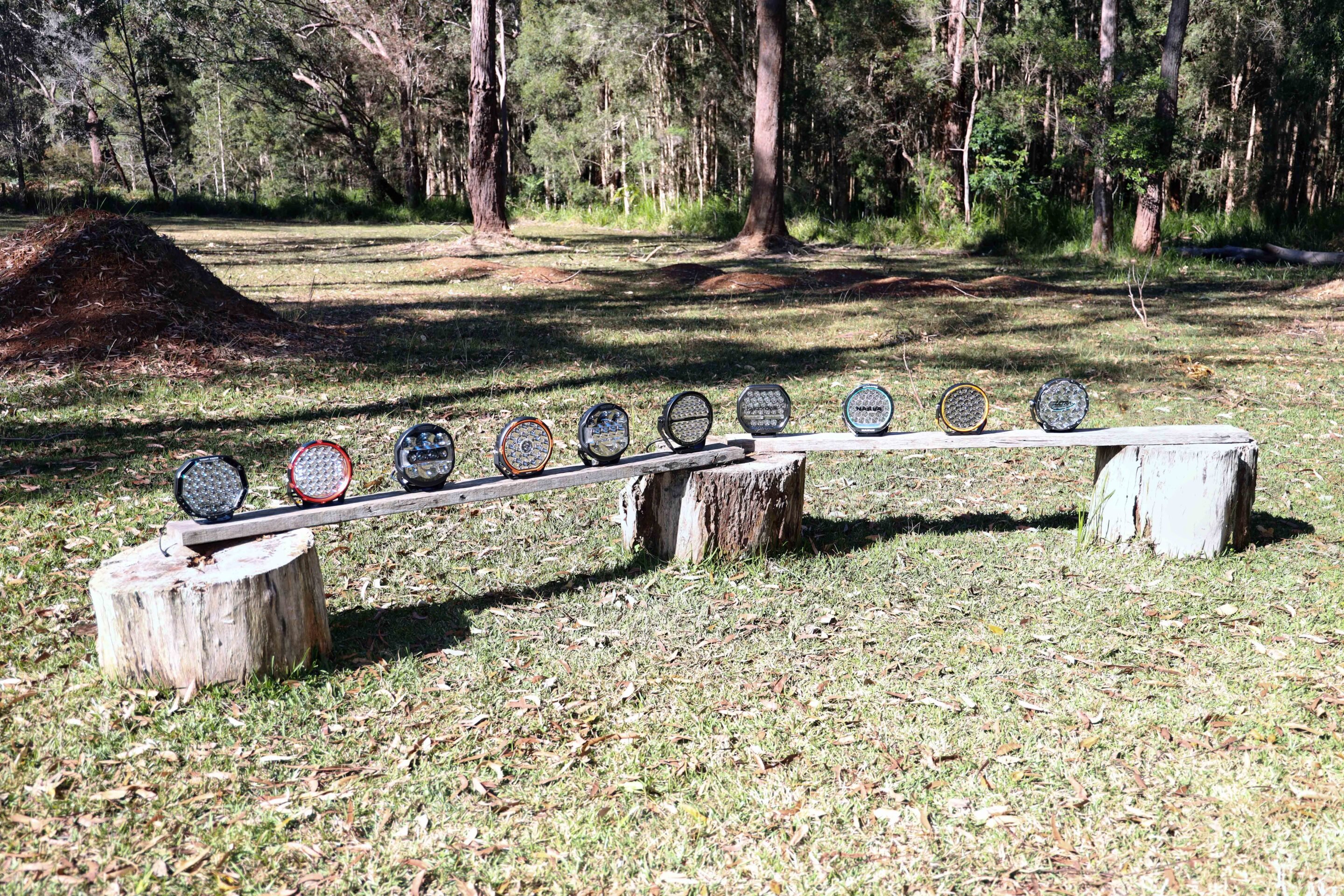
LED advantages
LED driving lights remain one of the best light sources for driving beyond urban areas. They can cast a long, wide beam that suits virtually any driving condition.
LEDs also excel in drawing less current, require no warm-up time, and have a long service life. Their ability to deliver strong spread both horizontally and vertically enhances visibility in tough terrain or at speed. Add waterproofing, vibration resistance and overall durability, and it’s easy to see why LEDs are the top choice for today’s 4×4 lighting upgrades.
LED limitations
While LED driving lights have come a long way, they still don’t match the more eye-friendly CRI (colour rendering index) of traditional halogen lighting.
However, with ongoing advances in LED tech and optical design, it’s likely just a matter of time before they close the gap and offer better image quality across the full colour spectrum. That lower CRI can be problematic for human vision. It reduces detail in darker colours – especially browns and reds – which isn’t ideal given that most animals involved in night-time road incidents fall within those shades. It’s a real-world limitation worth noting if you regularly travel in roo country.
Sign reflection is another issue. LED lights can throw harsh glare back off roadside signage – but in fairness, so do high-output halogen and HID setups. It’s not exclusive to LEDs, and there’s no real way around it.
Lastly, LEDs often return less natural contrast than halogens. It’s a subtle difference, but one you can replicate in a photo editor: reduce contrast and tweak exposure or colour temperature, and you’ll quickly see how shadows and darker hues can lose definition. On the track, that can mean missing visual cues you’d otherwise spot with warmer lighting.
Testing method
To give each manufacturer a level playing field, every driving light was mounted at the same height and position on a bull bar and wired directly to the vehicle’s battery using a custom-made loom.
The loom included fusing and switching for safety, and allowed controlled on/off operation with the engine running during each test. The vehicle’s standard lights were fully covered and never visible in testing or photography. Each image shows the output from a single light only — so in a dual-light setup, expect roughly double the visible spread and distance.
All photos were taken from the same camera position — on the roof of the 4×4 — using fixed manual settings to ensure a consistent result. Wide-angle images were captured to show beam spread and foreground illumination, while tighter frames zoomed in on the road’s furthest reaches to highlight long-distance penetration.
With the exception of individual plugs and a couple of inches’ difference in wiring length, everything else was identical across the board. This test aims to offer as close to a real-world comparison as possible — giving you a true sense of the difference between a good light and a brilliant one.
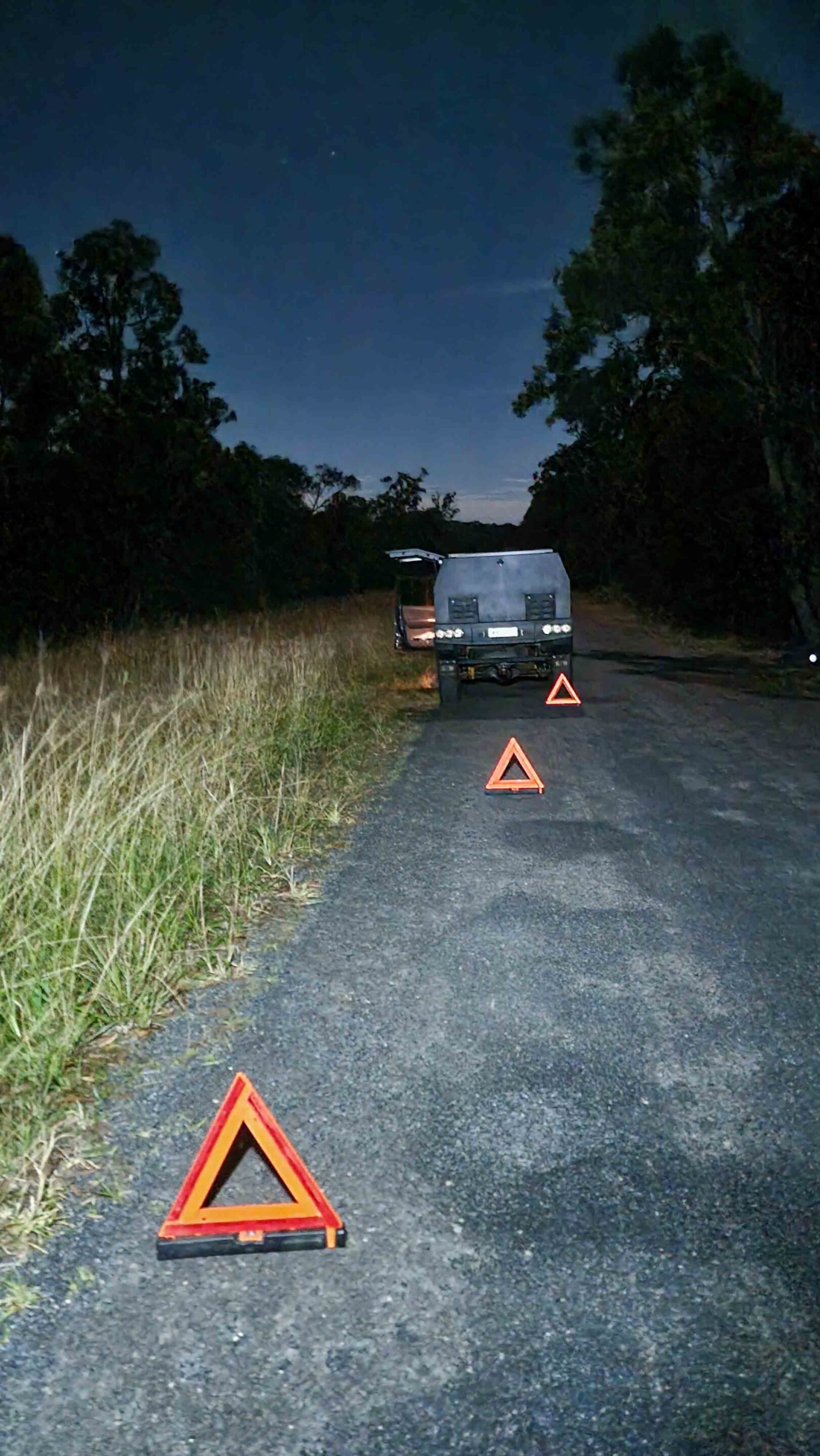
Key terms and specs
Lux is the international unit of luminance (brightness), defined as the amount of light falling on a one-square-metre surface from a uniform source one metre away.
The higher the Lux, the brighter the light on the subject. Lumen, more commonly quoted by manufacturers, refers to the total amount of light generated by the source. For example, a 10,000-lumen light might deliver 500 Lux at 20 metres, but drop to 10 Lux at 600 metres.
Raw Lumens refers to the theoretical brightness output of an LED chip under controlled laboratory conditions, while Effective (or Actual) Lumens is the real-world output after the chip is installed in a housing, covered with a lens, and subjected to losses through the wiring loom, heat management, and optical efficiency.
Generally, high-powered LED driving lights have three key factors that cause the effective output to differ from the raw output: thermal efficiency (the hotter the LED runs, the less light it produces), electrical efficiency (how well the wiring loom delivers consistent power), and optic efficiency (the amount of light lost through covers, lenses and reflectors).
Kelvin is a temperature scale used to measure the colour of light. Lower temperatures produce a more yellow light, while higher temperatures create a bluer appearance. LED driving lights typically fall between 5000 and 6000K. It’s important to note that Kelvin rating refers to colour, not brightness.
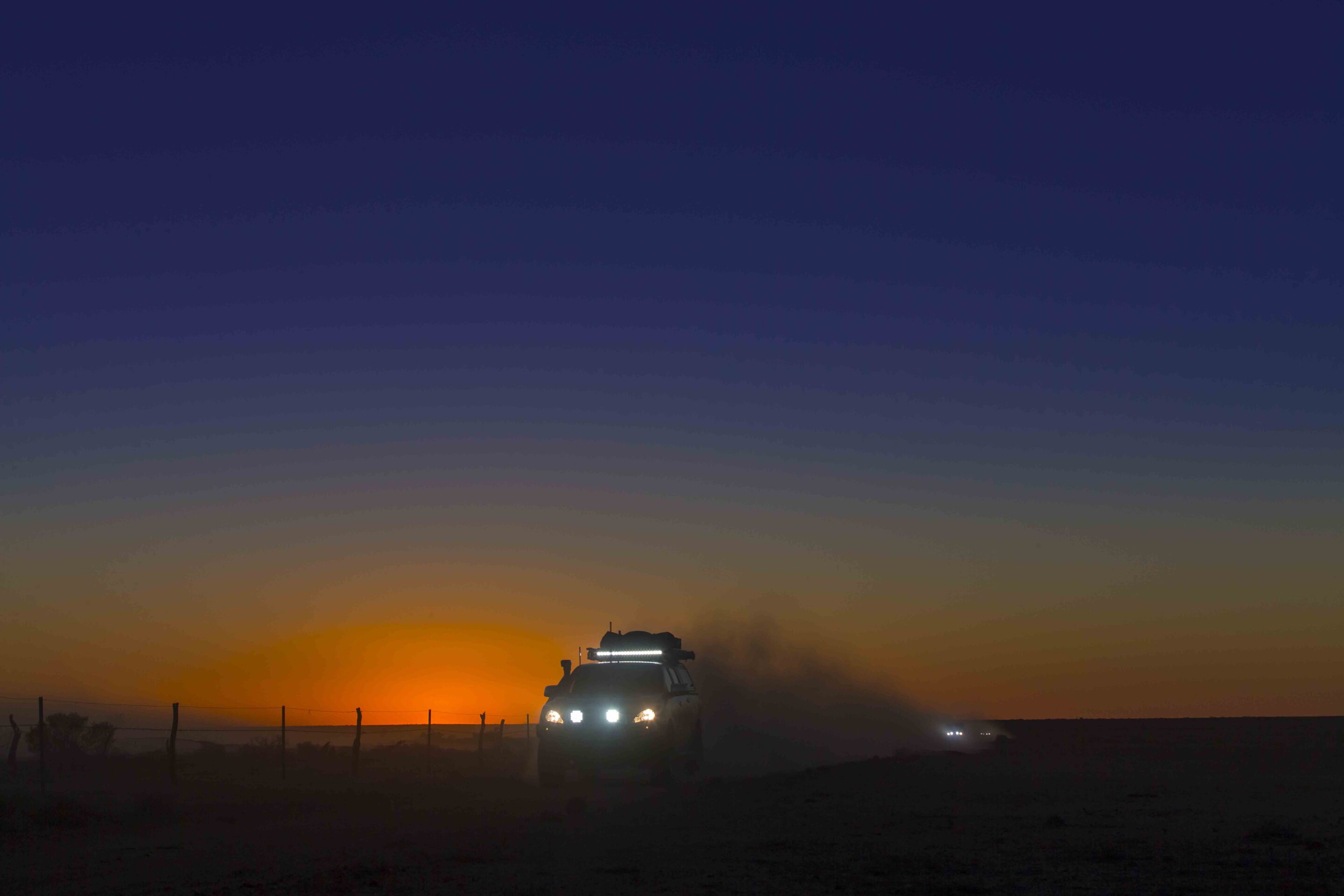
The widely quoted 50,000-hour lifespan of LED driving lights comes from the LED manufacturers themselves, not the companies producing the light units. Lighting engineers have gathered data showing that an LED will typically last at least 50,000 hours while still delivering 70 per cent of its original brightness – or a 30 per cent drop in output – even though the LED itself rarely fails completely.
Although high-powered LEDs don’t generate a huge amount of heat, they are prone to light degradation when exposed to sustained operating temperatures of just 30 to 40°C. That’s why almost all high-output LED driving lights incorporate numerous fins, flutes or heat sinks to help dissipate heat and maintain performance.
When it comes to dissipating heat via heat sinks – essentially just an efficient way to increase surface area and let heat soak away – the other key factor is the use of aluminium housings. Aluminium conducts heat far better than plastic, which is why almost all high-powered LED driving lights are built with aluminium casings, either cast or extruded.
When it comes to a light being water- and dust-proof, IP ratings are fairly straightforward. The letters ‘IP’ stand for ‘Ingress Protection’ (or sometimes ‘International Protection’), and the two digits that follow represent different types of protection. The first digit, ranging from 0 to 6, indicates protection against solid objects like dust, sand or rocks – with 6 being the highest rating. The second digit, from 0 to 9, represents protection against water ingress, with higher numbers indicating a light’s ability to withstand deeper or longer submersion.
Here are the top eight IP ratings commonly seen on lighting and electrical gear used by four-wheel drivers and campers:
| IP Number | First Digit – SOLIDS | Second Digit – LIQUIDS |
|---|---|---|
| IP60 | Protected from total dust ingress | Not protected from liquids |
| IP61 | Protected from total dust ingress | Protected from condensation |
| IP62 | Protected from total dust ingress | Protected from water spray less than 15 degrees from vertical |
| IP63 | Protected from total dust ingress | Protected from water spray less than 60 degrees from vertical |
| IP64 | Protected from total dust ingress | Protected from water spray from any direction |
| IP65 | Protected from total dust ingress | Protected from low-pressure water jets from any direction |
| IP66 | Protected from total dust ingress | Protected from high-pressure water jets from any direction |
| IP67 | Protected from total dust ingress | Protected from immersion between 15cm and 1m in depth |
| IP68 | Protected from total dust ingress | Protected from long-term immersion up to a specified pressure |
| IP69K | Protected from total dust ingress | Protected from steam-jet cleaning |
Key features of a good light
There’s always going to be personal preference involved, and plenty of people will disagree on what makes a “good” driving light. For me, there are three key requirements.
First, the light needs to throw a broad, uninterrupted beam with no shadows or beam imperfections over the first 200m. This wide coverage should clearly illuminate the roadside to spot animals thinking of darting out, and help highlight track or road conditions. Second, it must offer a solid mid-range beam that pushes out to 500 metres with consistent Lux – not just in the centre but out wide too – to ensure I can pick up hazards and read the terrain. And lastly, I want a high-intensity spot beam that reaches beyond 500m and ideally out to 1000m, giving me the ability to scan far ahead when conditions allow.
This last point is where many manufacturers, retailers and keyboard experts will argue that you need to see over a kilometre ahead. But anyone who’s ever actually paced out a true 1000 metres – rather than just estimating – knows that’s a seriously long way. In reality, there aren’t many roads that straight, flat and unobstructed for that distance. Sure, they do exist… but if your eyes are focused that far ahead, I’d argue you’re probably missing more important details in the range you’d actually need to stop in an emergency.
As an example, our test road measured 1200m in length and featured a large reflective signpost positioned dead centre. From that distance, it’s not immediately clear how big the sign actually is – and with some lights, it’s barely visible at all. But that lack of definition doesn’t actually detract from the overall performance or brightness of the driving lights being tested.
Now consider this: science tells us that at 100km/h, the average driver takes around 42m just to react and hit the brakes. After that, it takes another 56m to stop on a dry surface — or up to 80m if the road’s wet. Sure, there are plenty of variables that influence those numbers — reaction time, fatigue, tyres, load, road conditions — so let’s double that worst-case 122m figure to 244m. In fact, let’s triple it to be safe: 366m.
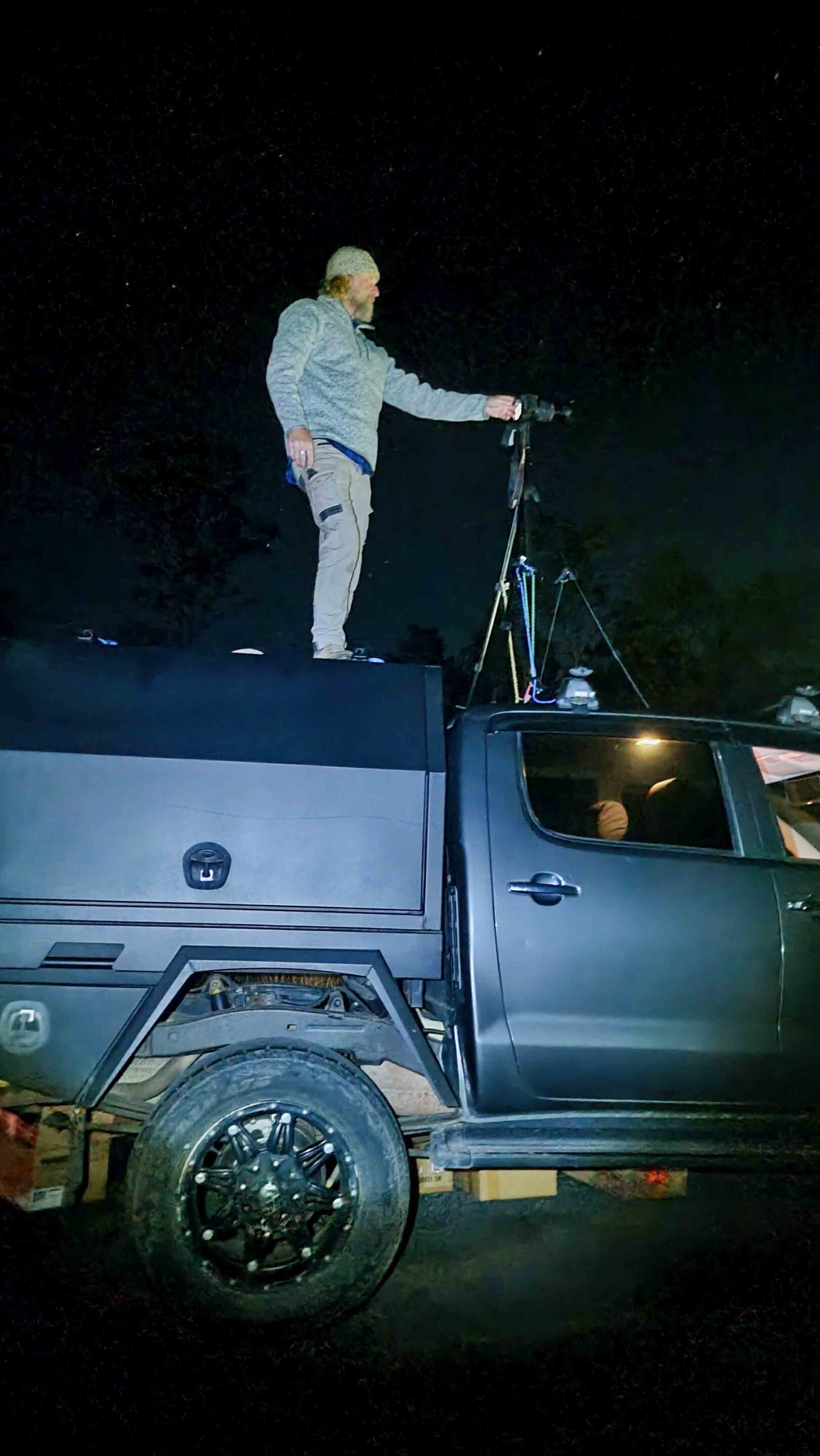
For those lights that only cast a narrow pencil beam out to 1000m or more, I say it’s a waste of light — unless you’re in a motorsport event and have at least four lights fitted to cover the width as well. Just think about how much crucial road information you’re missing in the short to mid-range distances, as that narrow beam dances around like Darth Vader’s lightsaber every time the road dips or turns. Sure, it might impress your mates or help in search and rescue scenarios, but for real-world touring, it’s of limited practical use.
Quality wiring looms, sturdy fitting hardware, ease of installation and adjustment, resistance to vibration on long corrugated tracks, light colour temperature, lens clarity, physical fitment to your vehicle and bullbar, and of course, price – all factor in when deciding where to spend your hard-earned on such a vital aftermarket accessory.
Lastly, consider how and where you plan to use your lights. If you spend most of your time barrelling along the Nullarbor, tackling steep, narrow climbs in the Victorian High Country, or powering through beaches and coastal salt spray, that should influence your choice of light style and beam pattern. For me – and for most drivers – it’s likely I’ll encounter all of the above and more each year, so settling on a good-quality compromise is essential.
You should also consider light temperature. A Kelvin rating that’s too high, combined with a less-than-ideal CRI (colour rendering index), can result in unnatural light output that makes it harder to distinguish certain colours – especially browns and other earthy tones. That’s not ideal when most of our native wildlife happens to be those very colours. It’s a whole topic in itself, and one worth revisiting another time.
The wiring loom — including wire gauge, plugs and associated components — can make or break a great light’s performance. The correct wire diameter is essential to deliver consistent power, while the plugs play a key role in waterproofing. The connector at the light body helps seal out dust and moisture from both the loom and, potentially, the light housing itself. Forget the DIY approach from the good ol’ days — buy a proper loom with your lights and save yourself the hassle.
The testing track set-up
We used a rural bitumen road with no street lighting, although it did have reflective roadside markers. These were temporarily covered during photography.
I placed my own reflective markers at 200m increments along the test track, which measured 1.2km in total. If you look closely at the photos, you’ll spot these markers on the right-hand side of the road. At the far end of the road is a larger reflector — the signpost marking the T-intersection at the road’s end.
The trees lining the right-hand side of the bitumen are set back an average of 2m from the road’s edge – the perfect hiding spot for roos and other wildlife poised for a last-second kamikaze bound into the path of oncoming vehicles.
On the left-hand side, varying-height grass — up to about a metre tall — sits close to the bitumen. While this does block some of the light at close range and narrows the beam pattern slightly, it represents a realistic driving scenario. The grass extends about 10 metres from the road, where a star picket and wire fence runs parallel and is visible in some photos taken with lights that offer a broader spread. A further five metres beyond the fence lies a line of trees, only illuminated by the widest beam patterns.
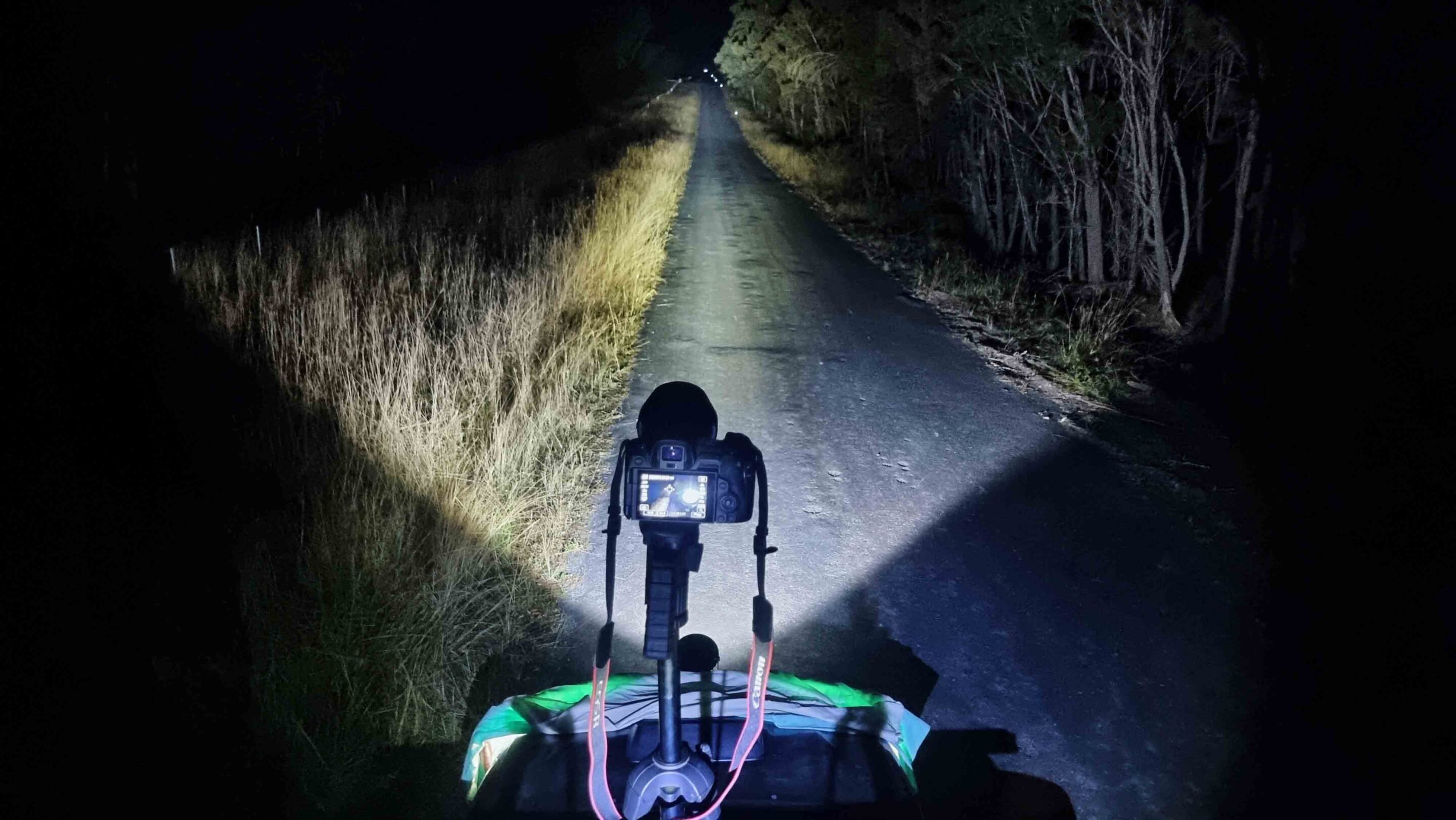
To add another dimension to the test, there’s an overhanging tree branch positioned just 50 metres in front of the lights. Some driving lights pick up this branch clearly, while others leave it cloaked in darkness. Some might argue that any light cast that high is wasted or scattered and of little practical use. I disagree – in off-road scenarios with steep climbs, undulations or uneven terrain, that extra vertical spread can momentarily illuminate the track ahead, making it a genuine asset in the right conditions.
Each light was tested individually and mounted on a custom, fully adjustable bracket fixed to my bullbar, replicating real-life height and positioning. Keep in mind, all photos show the performance of a single light — fitting a matched pair on your 4×4 will effectively double the output. My HiLux’s standard headlights were covered during testing to prevent any interference, ensuring the images reflect only the performance of the driving light under test. Of course, when used in the real world with your vehicle’s headlights uncovered, you’ll get a touch more illumination in the immediate roadside zone — but any quality aftermarket driving light will still leave the factory units in the dust.
Driving light line-up
We’ve gathered the top names in aftermarket driving lights, measuring 200mm diameter (or thereabouts), all of which are LED-style lights. Given that LED (Light Emitting Diodes) is the most popular aftermarket choice for most 4x4ers, we’ve not included halogen or HID in this comparison. In no particular order, other than alphabetical. Read on.
Bushranger NightHawk VLI
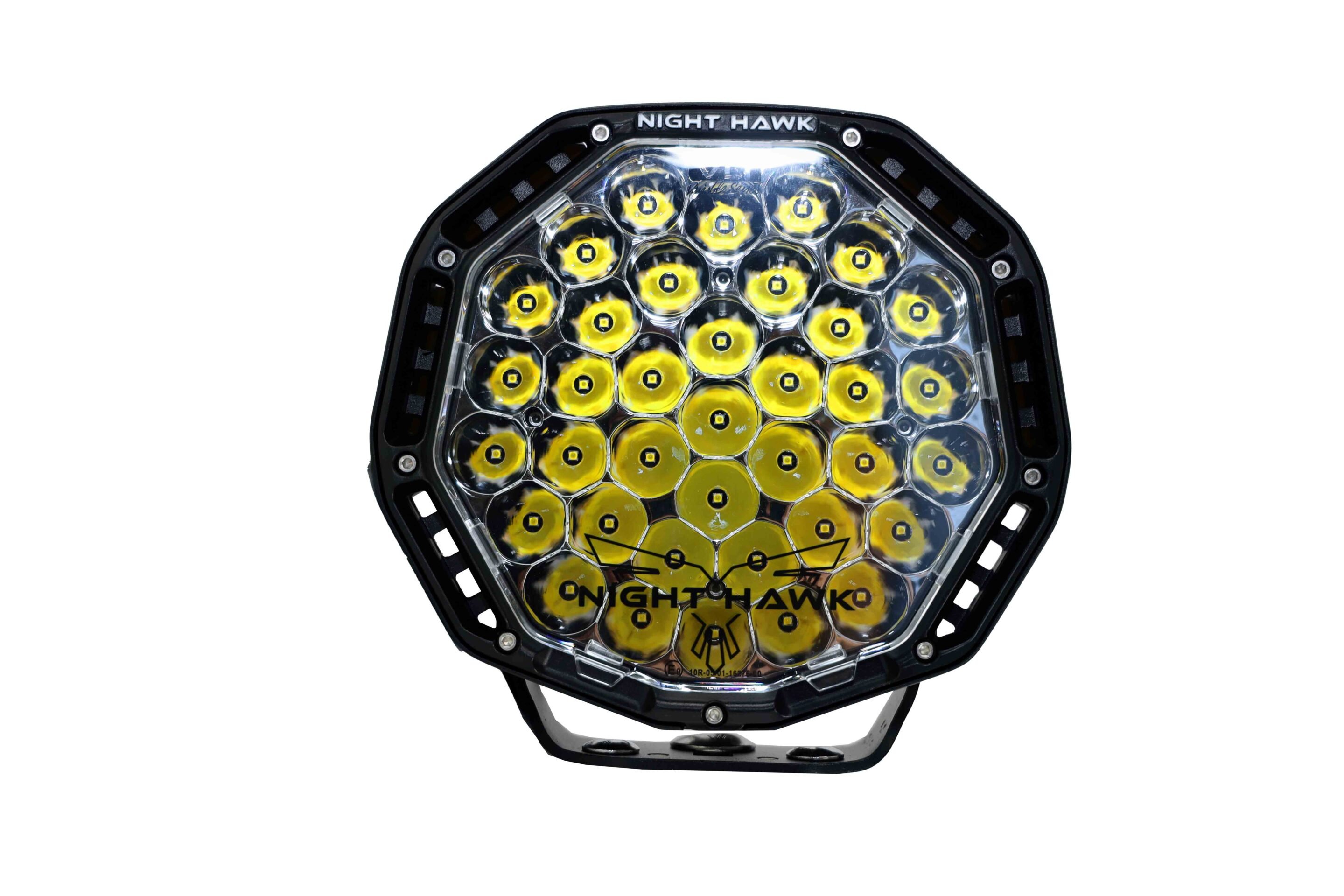
The Bushranger Night Hawk VLI (Variable Light Intensity) exudes quality in both design and performance. It’s a hefty unit with a distinctive 10-sided body and integrated flow-through cooling ducts that provide effective heat dissipation while adding to its rugged appearance. With eight selectable intensity settings, the VLI lets you tailor the beam output to suit varying driving conditions — from a soft glow on rural backroads to full-bore illumination when visibility matters most.
An excellent, concentrated spot beam gives the Night Hawk VLI serious long-distance punch, while its short-to-mid-range spread is impressively even and free of shadows or artefacts — making it a strong standalone performer. Clip on the spread beam cover and the light transforms, casting a wide, balanced beam that excels at closer ranges. While this does slightly compromise long-range intensity, pairing two units — one in spot configuration, the other in spread — delivers the best of both worlds and a highly effective all-round lighting setup.
A triple-bolt bullbar mounting system, combined with dual vertical alignment bolts per side, should ensure the light remains securely mounted and stable – even on the roughest corrugated tracks.
Notably, we didn’t have the 8-stage VLI function connected during testing. Instead, our custom wiring loom delivered full power to the light, allowing it to operate at maximum output and showcase its full potential.
Looking at the test photo (noting it’s without the spread reflector), the beam is noticeably narrower than many other lights – as expected – which is also evident in the partial illumination of the overhanging branch. That said, the brightness and evenness of the light are superb.
Given the lower price compared to some of the big-name brands, these Bushranger VLI lights pack plenty of punch and deserve a place at the top of your shopping list.
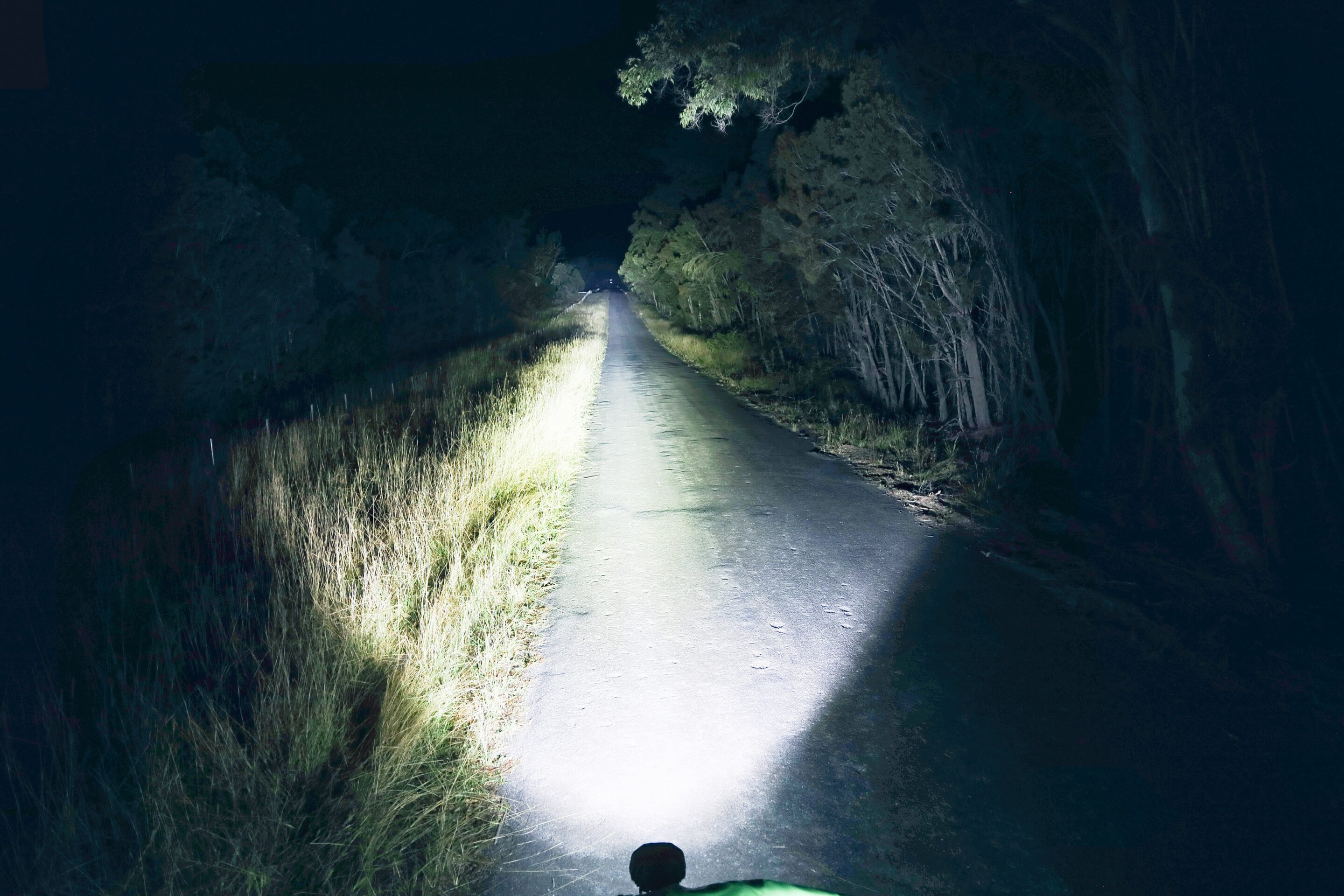
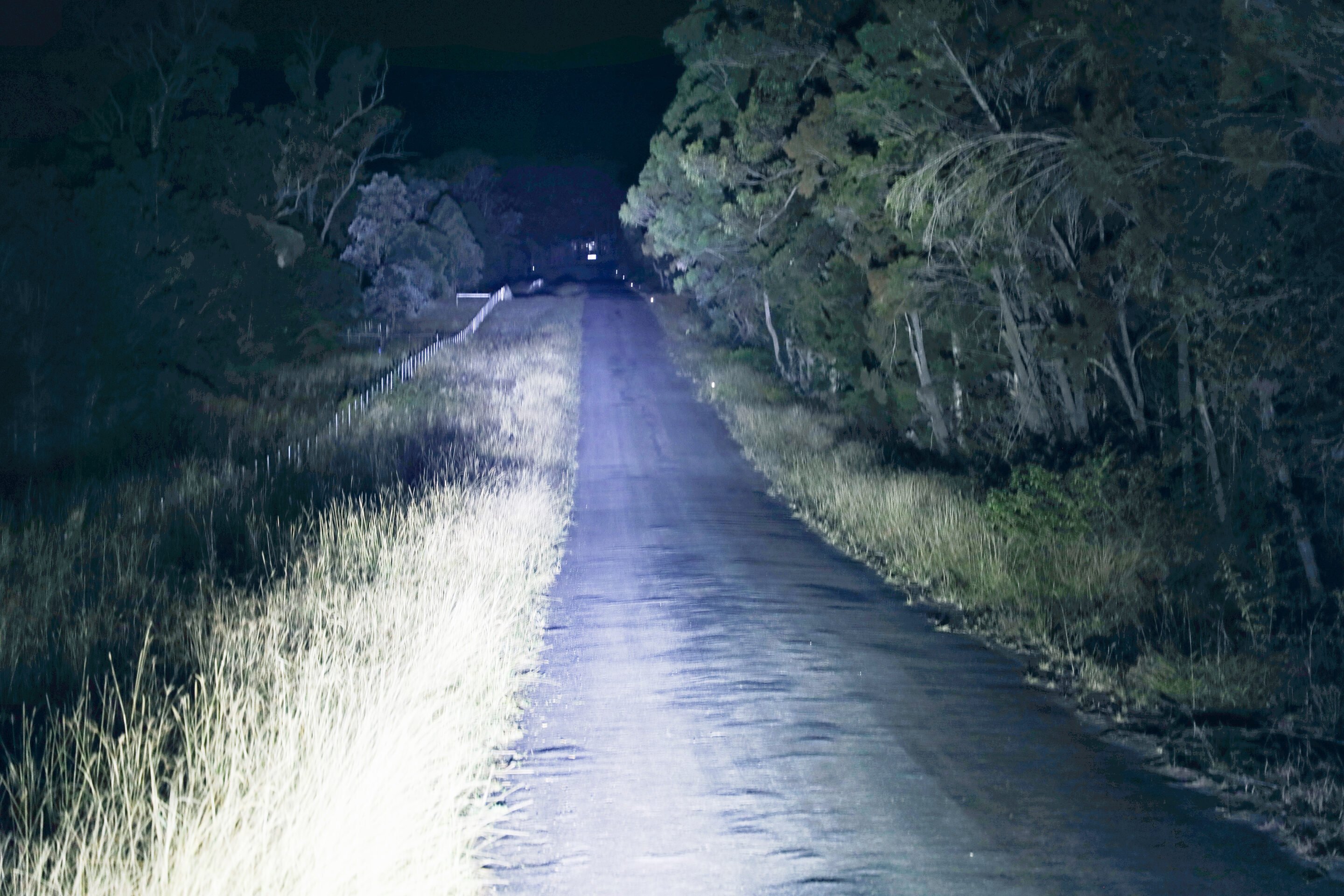
| Light brand/name | Bushranger Night Hawk VLI |
|---|---|
| RRP | $850 kit |
| Size | Diameter 230mm; Height 224mm; Width 230mm; Depth 102mm; Weight 3.2kg |
| Light pattern (spot, spread or combination) | Interchangeable covers, combination spot or flood beams |
| Current draw (amps) | 24.4A at 14.4V |
| Power (watts) | 350W |
| IP Rating | IP67 and IP69K |
| Colour temperature (Kelvin) | 5700k and 72 CRI |
| LED specifications | 37 x 5W OSRAMs per light |
| Effective lumens | 27,400Lm |
| Maximum distance at 1Lux | 1486m |
| Claimed beam distance | 1486m (NATA tested) |
| Claimed beam width | 200m (NATA tested) with flood covers |
| Warranty | 5 years |
| Additional notes | Fitted weight 7.2kg; Kit contains 2 x VCI 9-inch LED lights, one plug-and-play relay-free wiring system with a single dial controller that can control up to four VLI lights |
Ignite Laser
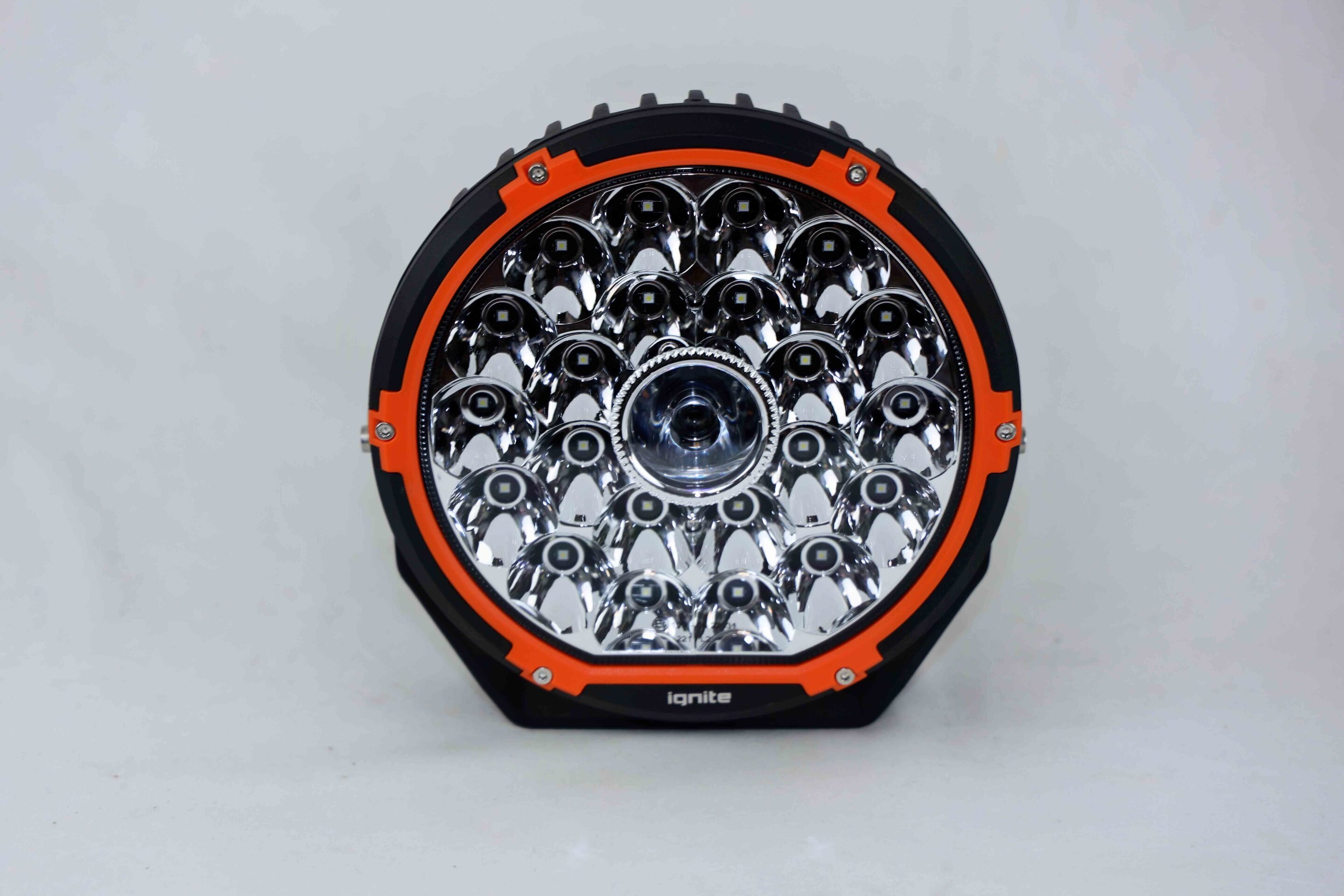
Combining dual beams at eight and 10 degrees, the Ignite Laser uses 22 x 6W high-intensity LP LEDs and a single 20W high-intensity Osram Laser LED to deliver a powerful and reasonably wide beam – especially impressive at this price point. Given these are the second cheapest lights on test, their performance is remarkable.
That said, there are a few design compromises worth noting. The light body has fewer cooling fins, and the simplified mounting bracket lacks the engineered reinforcements seen in more premium offerings that help reduce vibration on corrugated roads. However, triple bolt mounting is possible, which should help with stability, and dual vertical bolts provide for height adjustment. While the fin count is lower, the tapered design may still offer sufficient cooling due to the relatively lower power output compared to some of the others.
Looking at the test photo, there are a few slightly duller sections on the right-hand side of the beam, but the large-diameter, long-distance spot is clearly defined, and the overhanging branch is well illuminated. This is a simple light, free from fancy extras, yet it performs well above its price point – an impressive formula for an affordable and effective driving light.
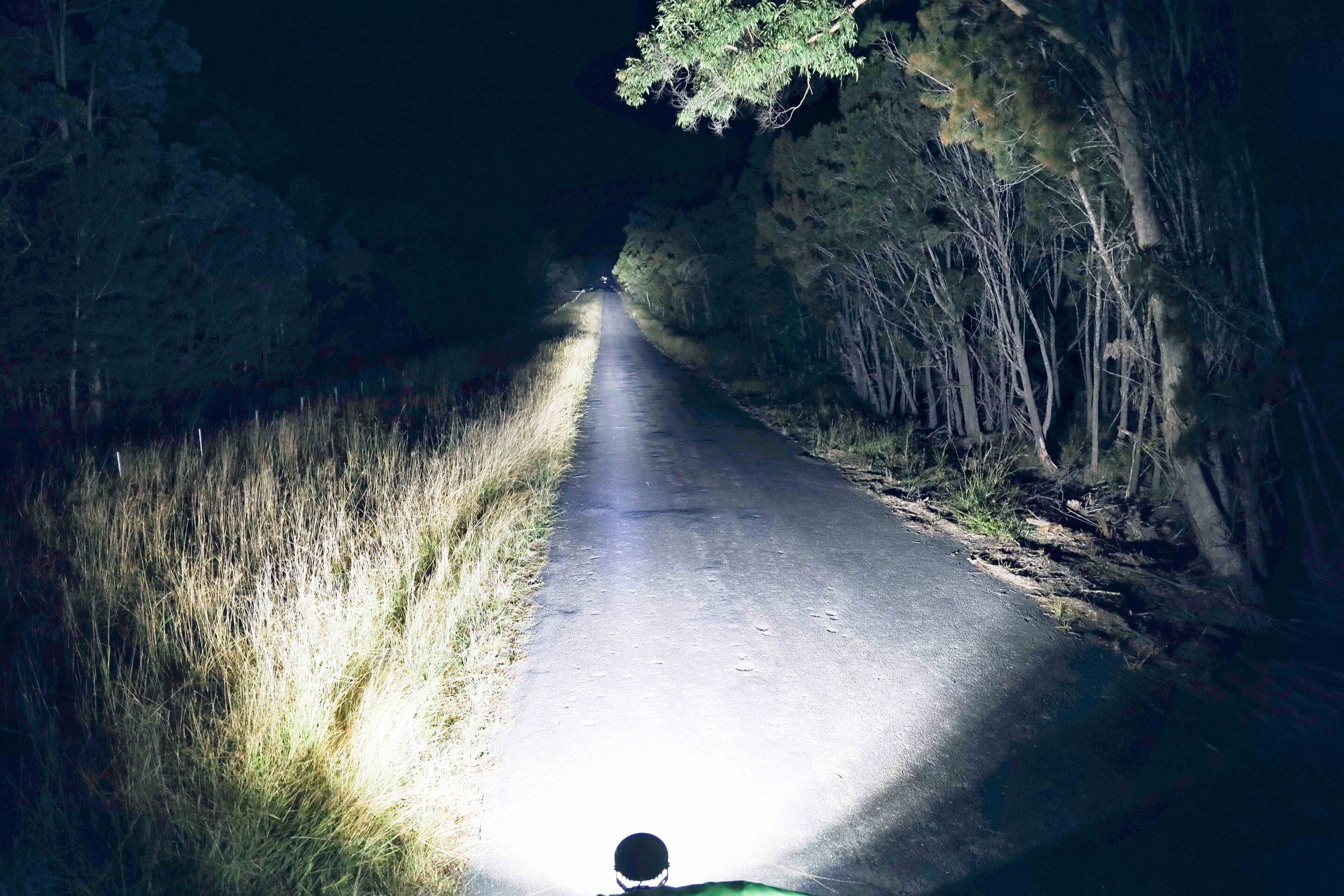
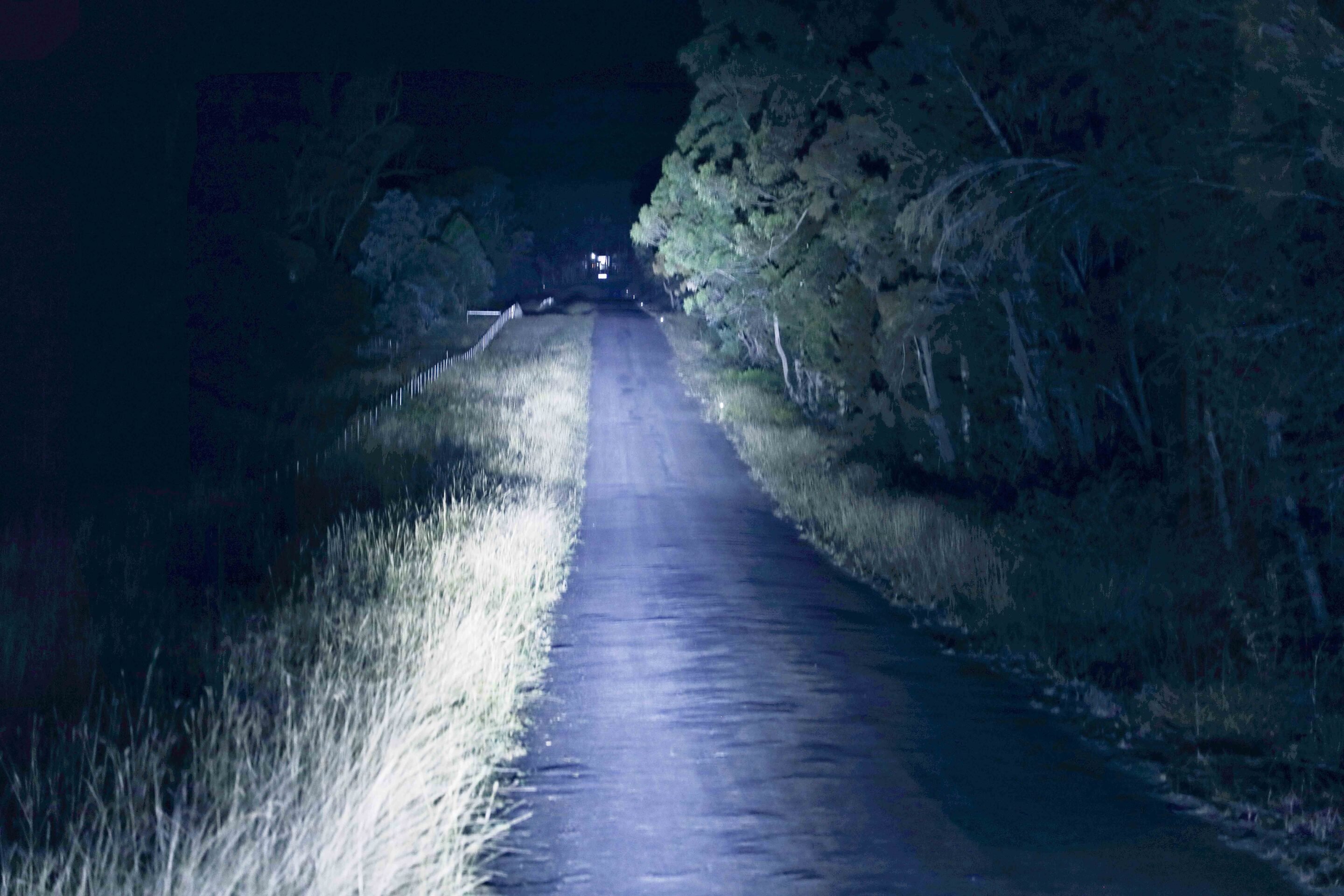
| Light brand/name | Ignite 9-inch Round Slimline Laser |
|---|---|
| RRP | $299 |
| Size | Diameter 230mm; Height 232mm; Width 225mm; Depth 84mm; Weight 2.6kg |
| Light pattern (spot, spread or combination) | Spot |
| Current draw (amps) | 11.4A @ 12V, 5.7A @ 24V |
| Power (watts) | 152W |
| IP Rating | IP68 and IP69K Rated |
| Colour temperature (Kelvin) | 6000K |
| LED specifications | 22 x 6-Watt High Intensity LP LEDs, and 1 x 20 Watt High Intensity Osram Laser LED |
| Effective lumens | 12,300Lm(Raw 14,500Lm) |
| Maximum distance at 1Lux | 1008m |
| Claimed beam distance | 1 Lux @ 1008m and 1,016,000cd Peak Beam Intensity |
| Claimed beam width | 8-degree Laser Pencil Beam and 10-degree LED Spot Beam provide a Combined Driving Beam Pattern |
| Warranty | 5 years |
| Additional notes | 50,000 hours LED lifespan; ECE R10 and CE Approved; UV, water, and shock resistance to 15G; Environment Temperature: -40C to +60C |
Ironman 4×4 Scope
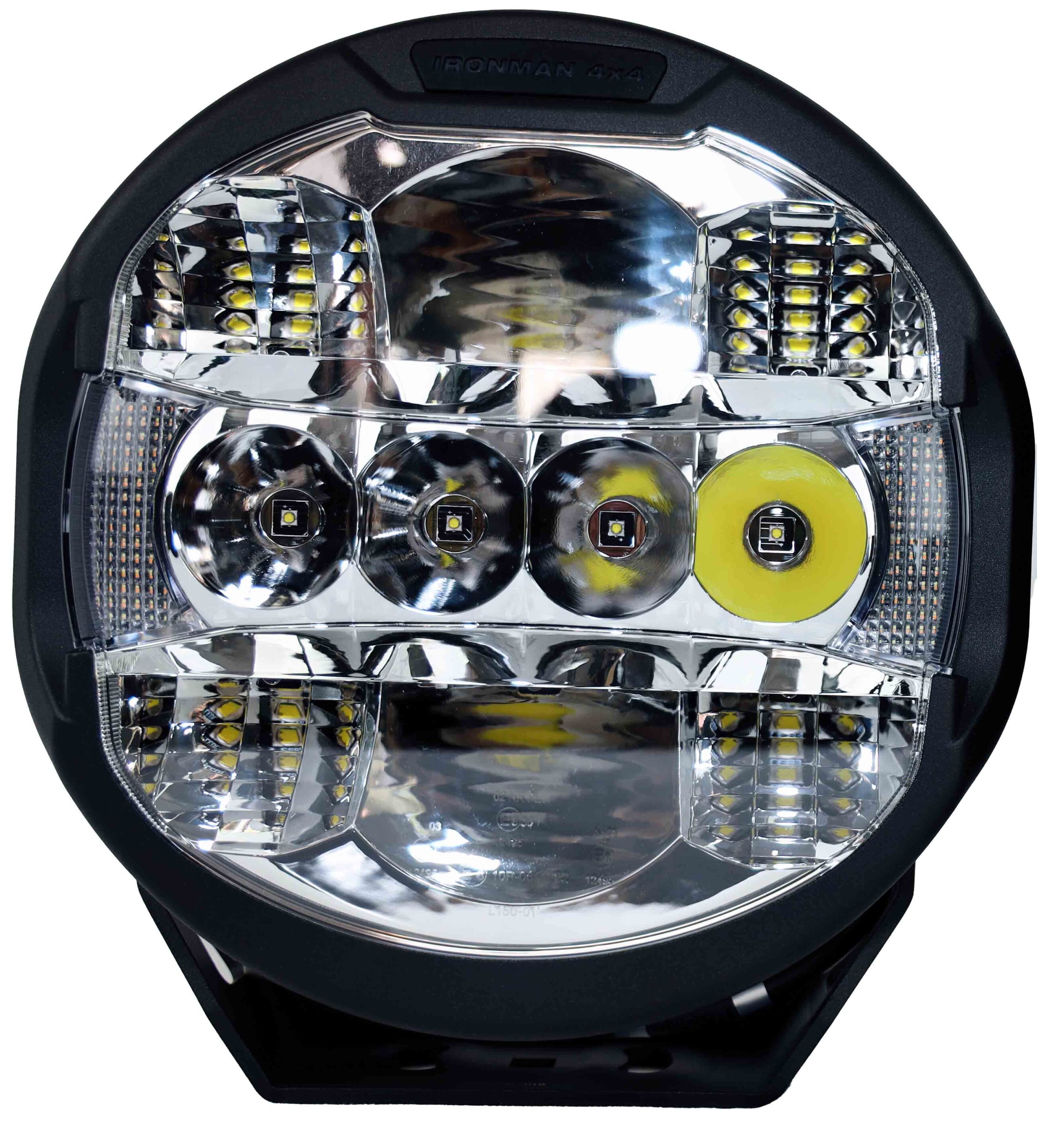
The Ironman 4×4 Scope lights come as a pair. A spot beam focuses on long-range visibility, while the combo beam (which we photographed) spreads light wider. The combo beam was the version tested here, and it impressed with its excellent balance of long-range throw and lateral spread. A closer inspection reveals the differing deep-dish reflector designs that tailor each beam without relying on clip-on filters or external diffusers – it’s all integrated into the engineering. Despite being the ‘spread’ version, the combo light still punched well down the road while illuminating a broad area around the vehicle.
Those reflectors are notably deeper and wider in diameter than traditional units and use fewer LEDs overall. This design is said to reduce both heat output and power consumption while maintaining impressive lighting performance. The reduced current draw is a bonus, particularly for those concerned with electrical load, and the light’s performance doesn’t seem to suffer for it – a clever and efficient bit of engineering.
The Scope driving lights include a handy dimming function, allowing output to be reduced by 80% at the touch of a button. This is particularly useful when approaching towns or built-up areas, as it minimises harsh reflections from roadside signs. It’s a thoughtful inclusion that elevates the lights beyond standard factory headlights when full power isn’t necessary.
Looking at the test photo, the spread of light in all directions is most impressive – especially the well-lit overhanging branch and the illumination off to the left-hand side of the test strip. The lighting is superb, even and bright, both at distance and across the width of the road. Considering the affordable price and strong performance, these lights are definitely worth serious consideration.
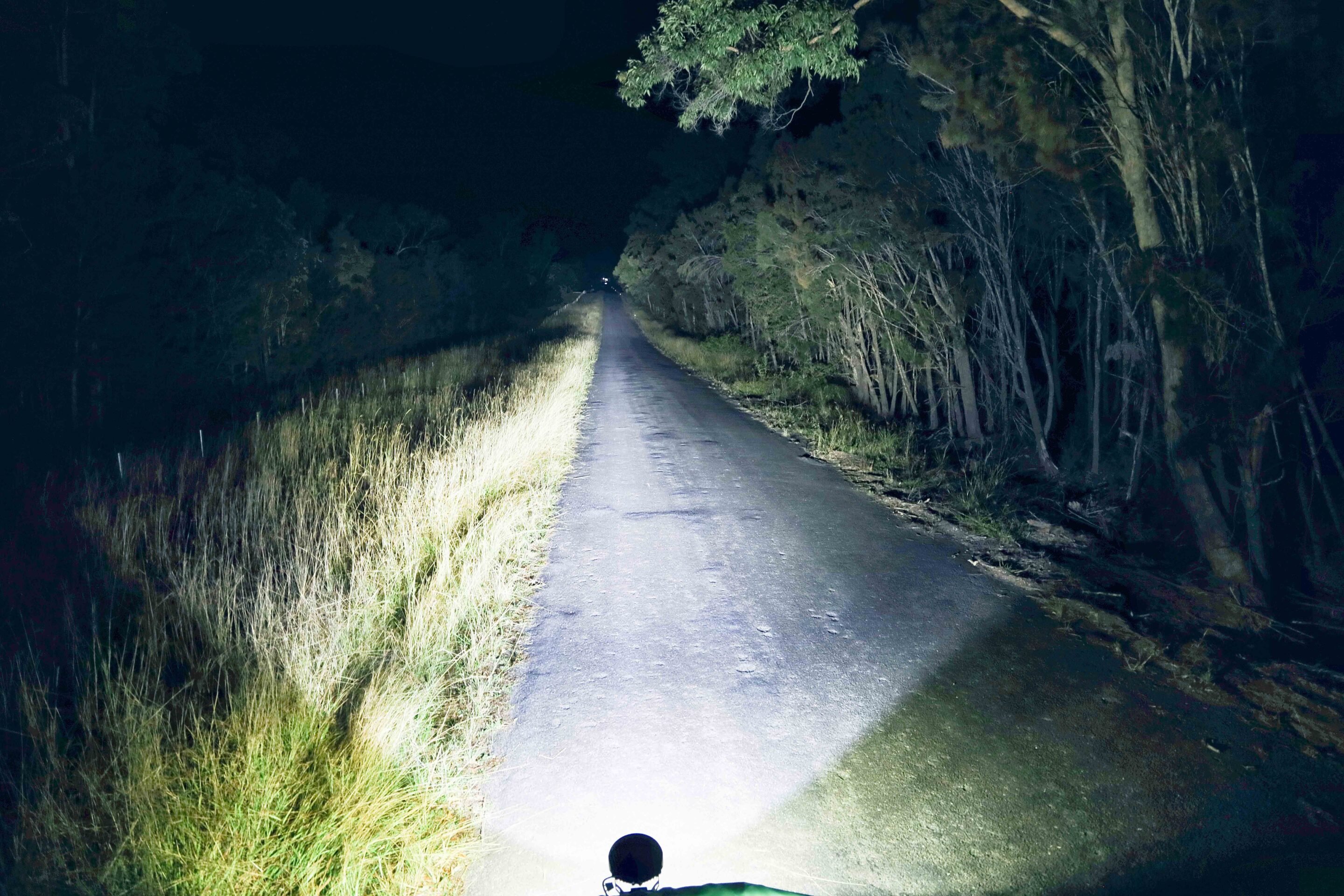
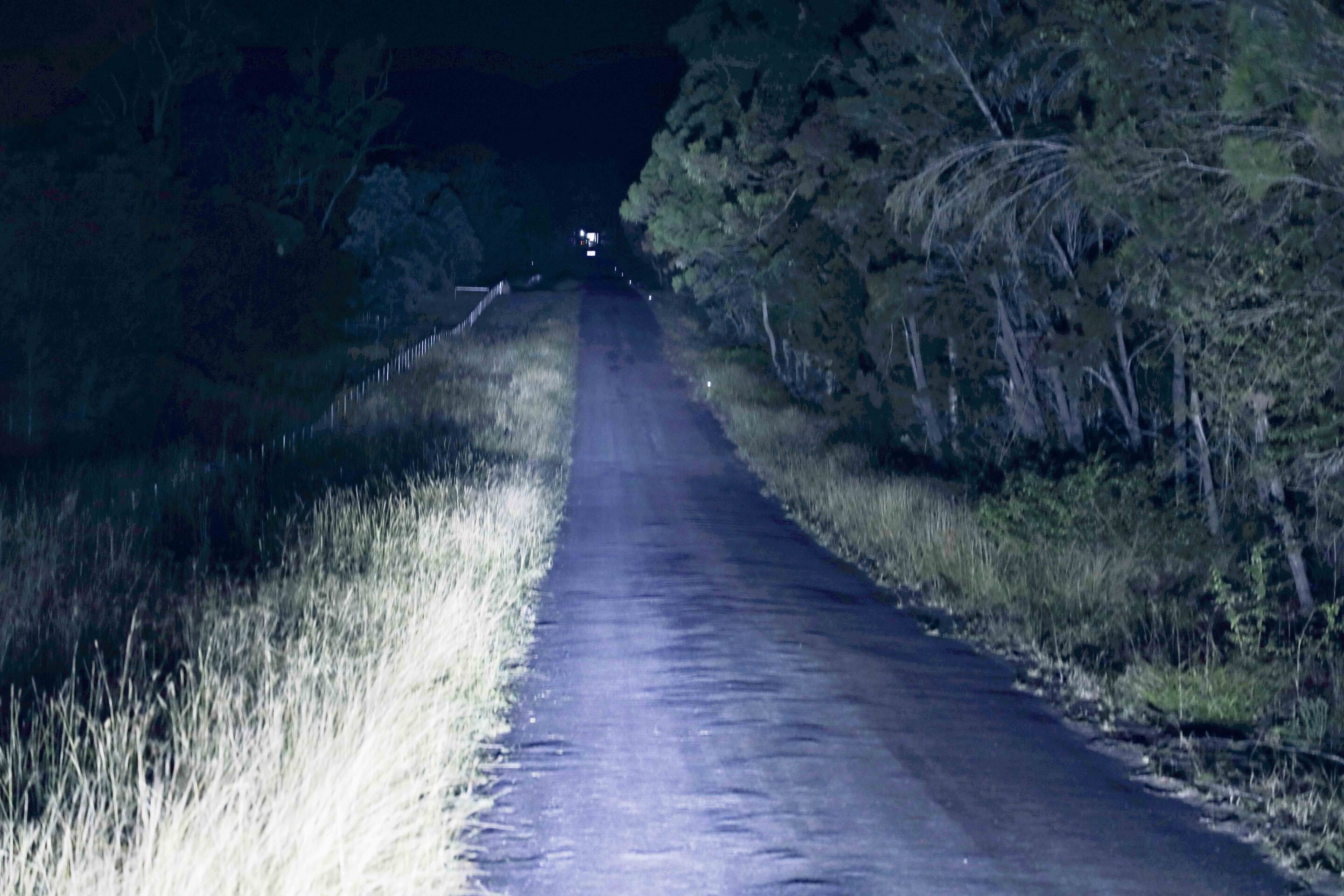
| Light brand/name | Ironman 4×4 Scope 9-inch Combo Beam |
|---|---|
| RRP | $349 per light |
| Size | Diameter 227mm; Height 245mm; Width 227mm; Depth 100mm |
| Light pattern (spot, spread or combination) | Combination |
| Current draw (amps) | 12.6A @12V |
| Power (watts) | 113.5W |
| IP Rating | IP68 Water & Dust Ingress |
| Colour temperature (Kelvin) | 5700K |
| LED specifications | Configuration: 6 x 12W & 4 x 10W high output LEDs |
| Effective lumens | Single: 10,800Lm; Pair: 21,600Lm |
| Maximum distance at 1Lux | 1400m |
| Claimed beam distance | 1200m |
| Claimed beam width | N/A |
| Warranty | 3 years |
| Additional notes | Deep dish reflector cups; Dimmability |
Lightforce Beast
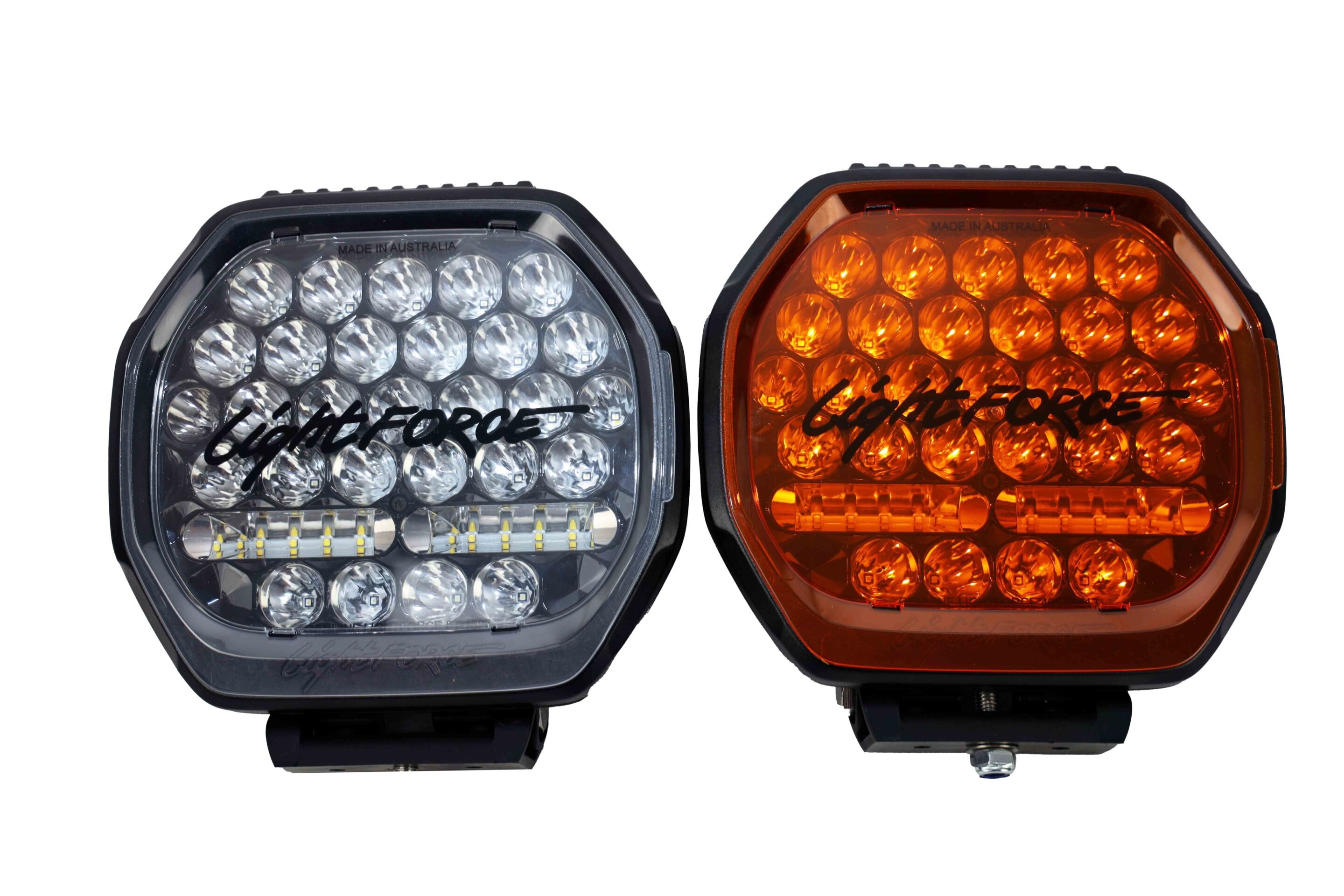
Beast by name, beast by nature. Let’s cut to the chase – these lights embody exceptional quality, clever design and top-tier engineering, with absolutely outstanding light output to match.
While some of the design cues may lean more toward aesthetics than pure function (and who doesn’t appreciate a sharp-looking product), the engineering innovation combined with thoughtful visual design makes this one of the standout lights on the market. Impressively, it’s far from the most expensive option on test. However, it’s worth noting that the price doesn’t include a wiring harness, which must be purchased separately. Given the complexity of the harness and its integrated switch gear, forget about a DIY setup.
Featuring three cleverly integrated modes to suit varying driving conditions, the Beast offers Spot Mode for long-distance illumination, perfect when maximum reach is required. Flood Mode provides excellent side visibility, ideal for winding or narrow roads. Then there’s Beast Mode, which unleashes the full power of the light, combining the wide spread of Flood Mode with a far more intense central beam. This design eliminates the need for clip-on filters or lens changes.
Beast, not behemoth – considering the complexity, functions, and performance on offer, these lights remain relatively slim and lightweight, making for a superb all-round package.
Looking at the test photo – just wow. From the moment I flicked the switch, I knew I had something special mounted to the front of my HiLux. In Beast mode, with all lights pumping, the long-distance beam, wide-angle spread and overall lighting performance were immediately obvious. While the overhanging branch isn’t quite as well lit as with some other lights, the far-reaching spot beam, broad spread to the far left, and consistent illumination along the right-hand tree line stand out. The ultra-wide, close-range lighting is astounding – pushing close to 180 degrees. Beauty and the Beast – it’s on show at your local road, track or off-road jaunt.
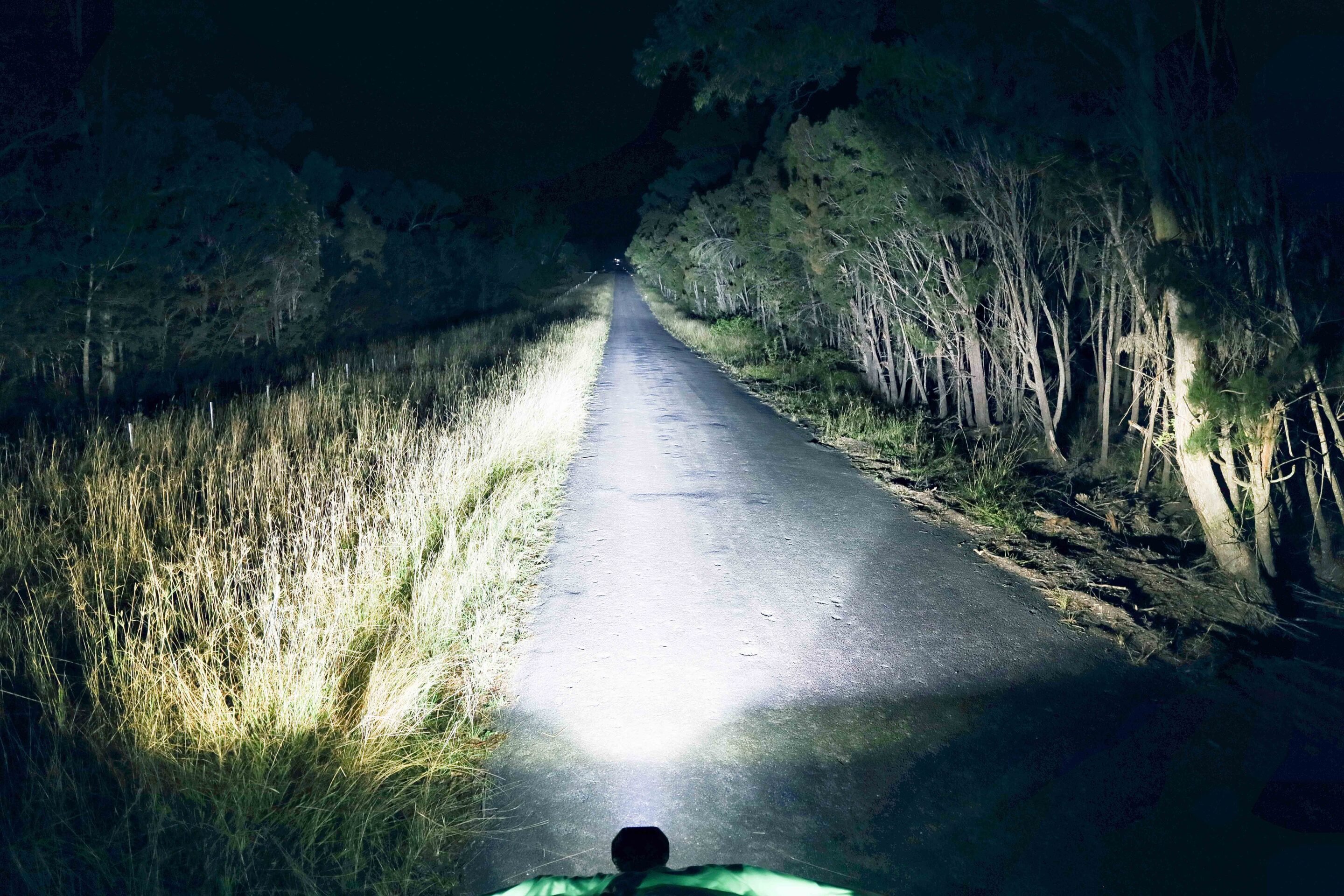
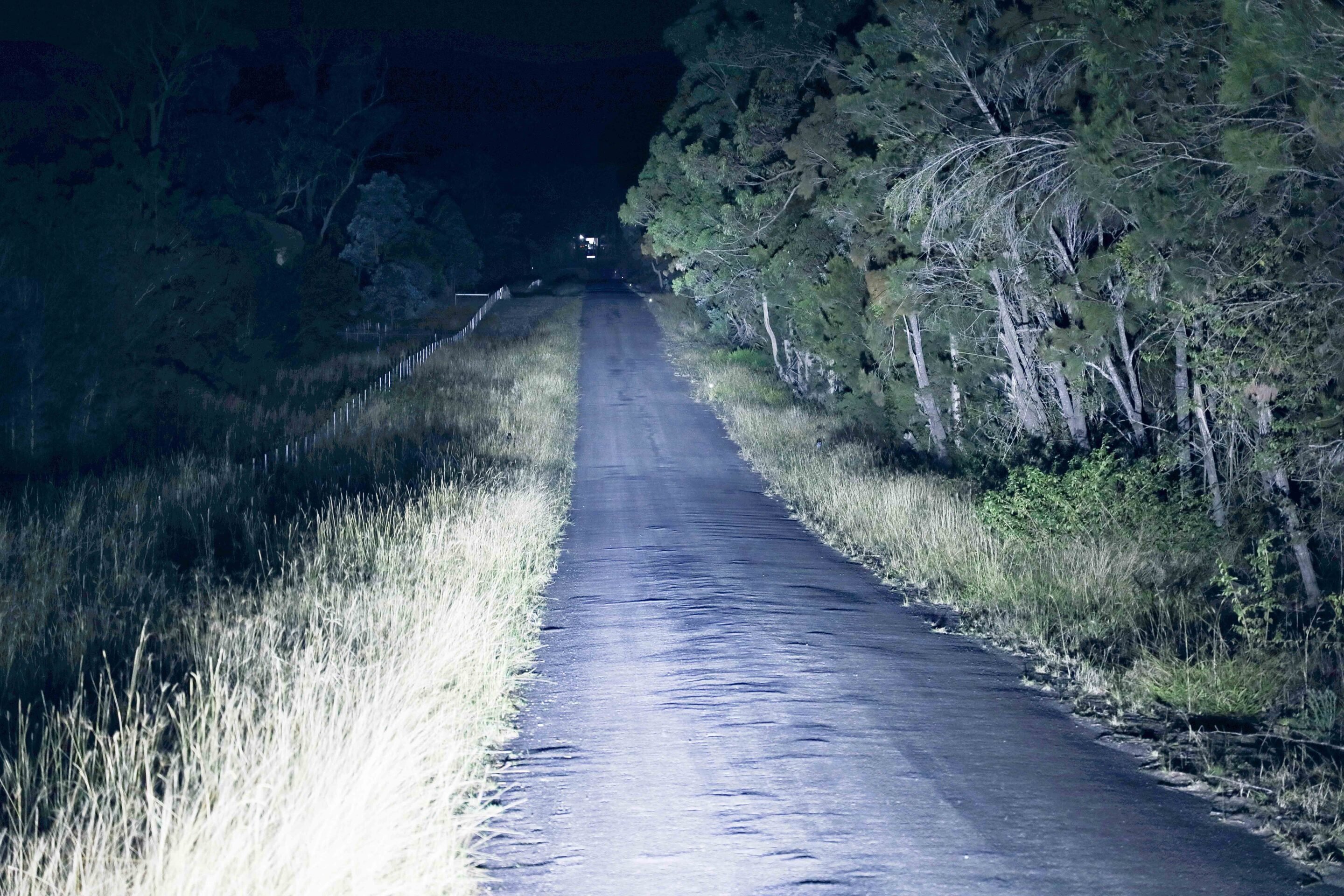
| Light brand/name | Lightforce BEAST |
|---|---|
| RRP | $599.50 (each) |
| Size | Diameter 233mm; Height 212mm; Width 232mm; Depth 82mm; Weight 2.2kg |
| Light pattern (spot, spread or combination) | Spot, Flood and Beast mode |
| Current draw (amps) | Spot: 11.2A @ 13.2V; Flood: 6.5A @ 13.2V; Beast: 13A @ 13.2V |
| Power (watts) | 172W |
| IP Rating | IP69K |
| Colour temperature (Kelvin) | Spot: 5700K; Flood: 5400K; Beast: 5700K |
| LED specifications | 36 Osram LEDs |
| Effective lumens | Spot: 10,275Lm; Flood: 7826Lm; Beast: 13,269Lm |
| Maximum distance at 1Lux | Spot: 1 LUX @ 1497m; Flood: 1 LUX 778m; Beast: 1 LUX @ 1375m |
| Claimed beam distance | Spot: Beam distance 1 LUX @ 1497m |
| Claimed beam width | Spot: Beam width 60m; Flood: Beam width 140m; Beast: Beam width 140m |
| Warranty | 5 years |
| Additional notes | Australian made |
Narva Ultima 215 MK3
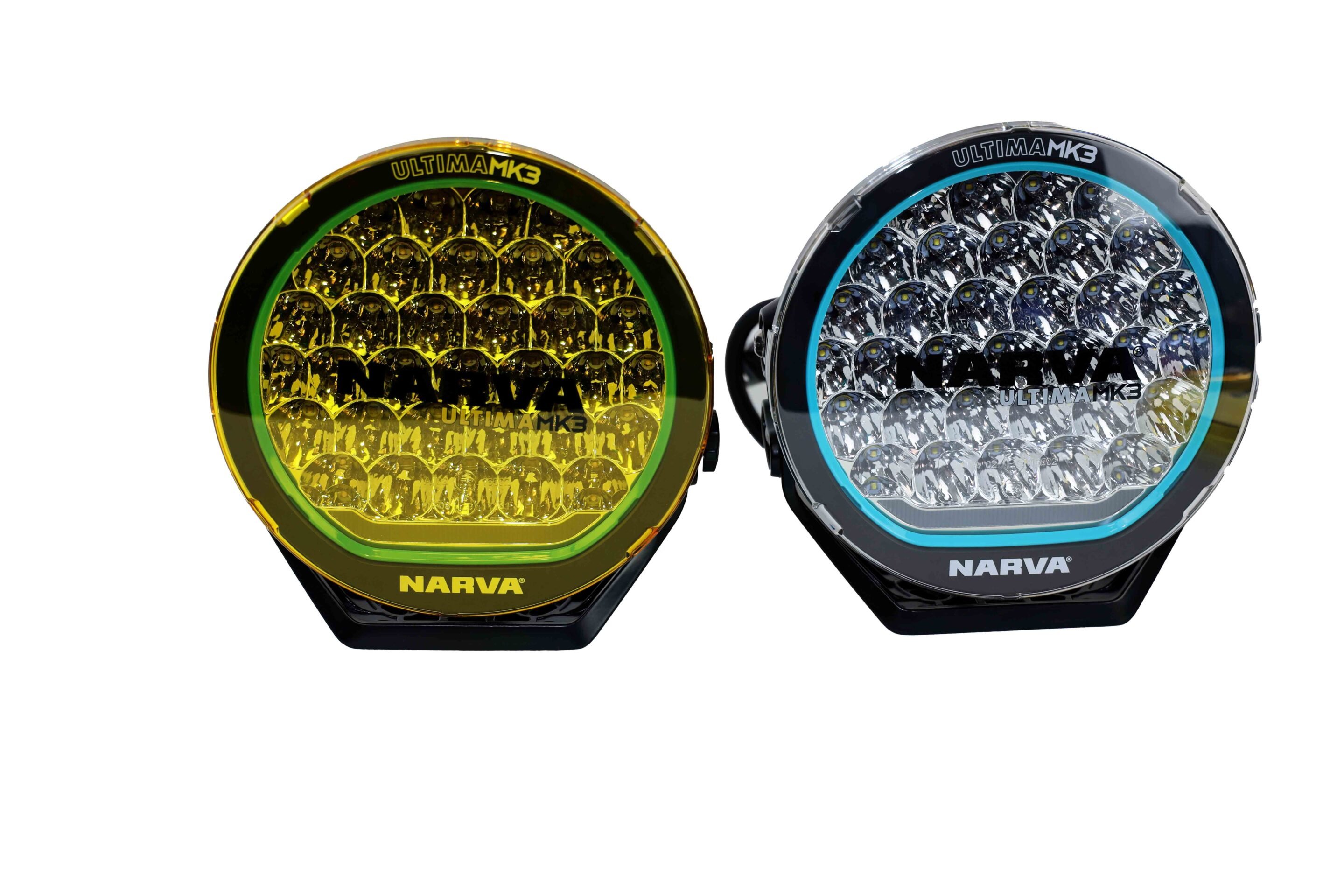
The Narva Ultima light is indeed a force in the dead of night. Offering a supremely bright and long-distance beam, it provides sufficient light output to see far and wide.
The design, engineering and build quality are a showcase of modern manufacturing excellence. Multiple mounting holes and toolless vertical adjustment make for simple, flexible installation. The sense of quality is immediately obvious — even before they’re mounted or lit up. While they sit at the premium end of the price range, you are getting a premium product.
Offering a hybrid beam pattern, the Narva Ultima 215 allows drivers to tailor light output for distance or spread depending on the conditions. An in-cab controller handles the adjustments on the fly, making it easy to adapt as the road changes. A range of coloured bezels is also available to match your vehicle and add a personalised touch to your setup.
Looking at the test photo, the medium to long-distance beam is superb, with excellent brightness and reach. The short-range spread is adequate, though not as wide as some others, and the overhanging branch is clearly illuminated.
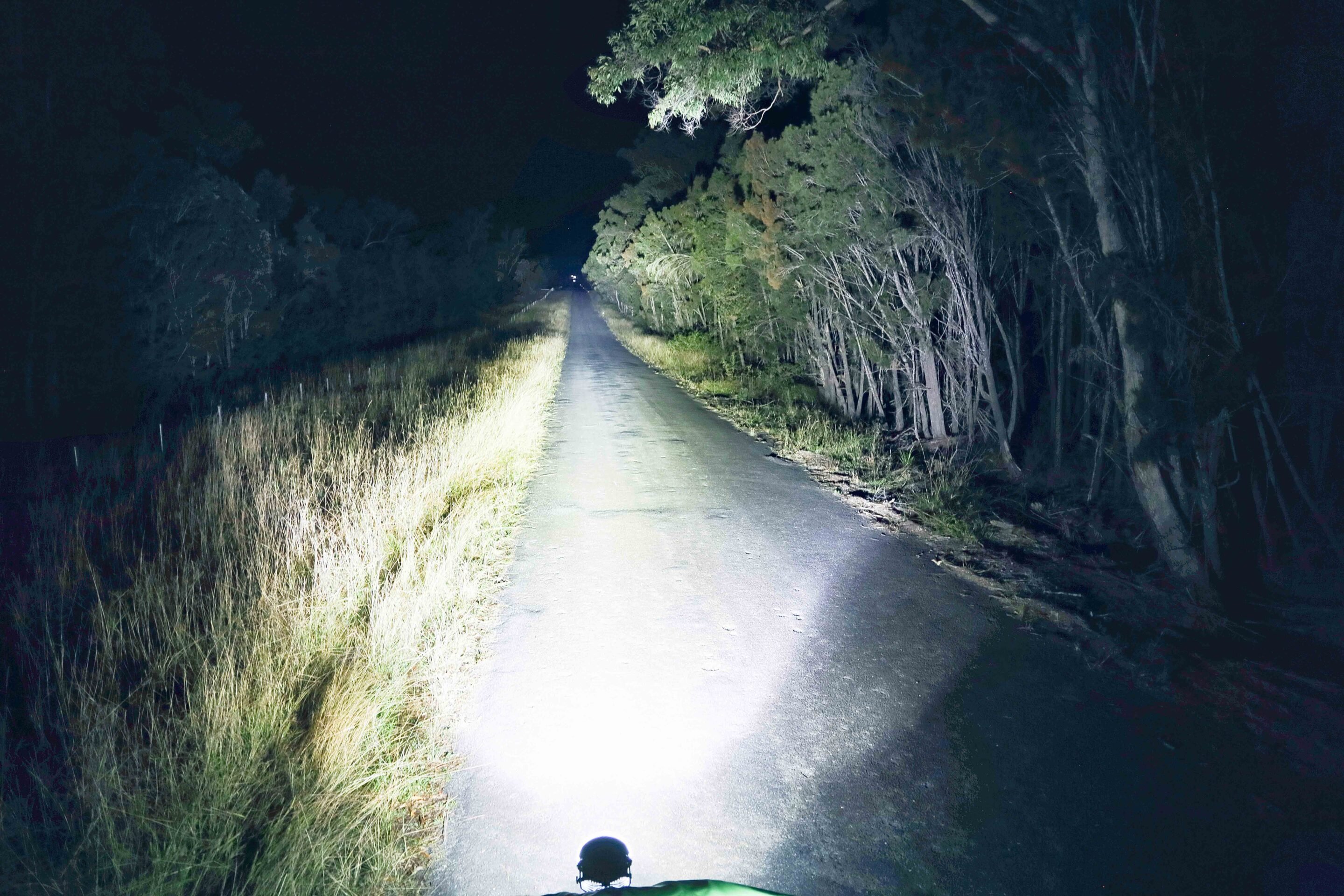
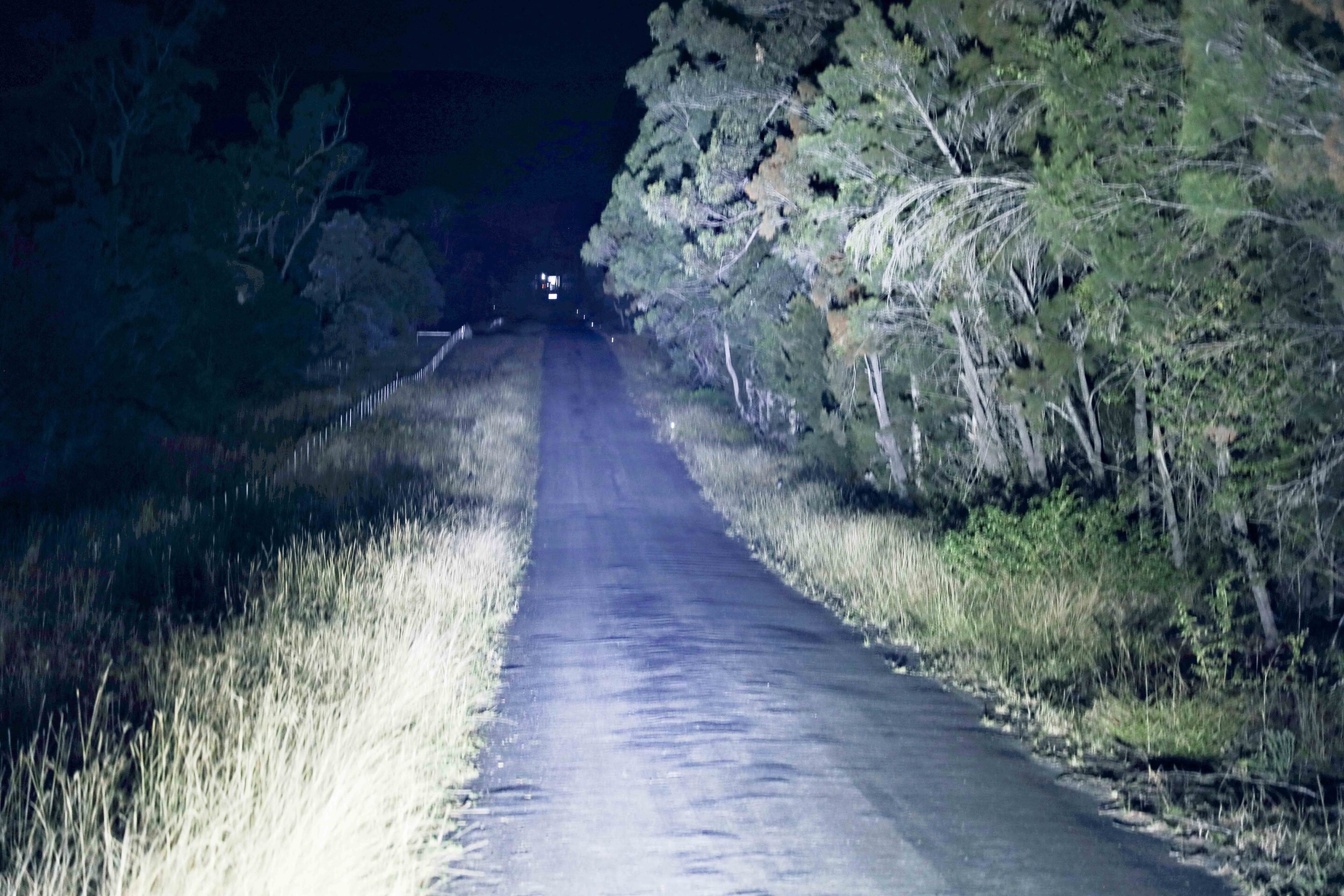
| Light brand/name | Narva Ultima 215 MK3 |
|---|---|
| RRP | $1450: 2 lamps & 12V plug and play harness |
| Size | Diameter 230mm; Height 235mm; Width 215mm; Depth: 112mm |
| Light pattern (spot, spread or combination) | Hybrid beam pattern |
| Current draw (amps) | 14.9A @ 13.5V |
| Power (watts) | 200W |
| IP Rating | IP68 & IP69K |
| Colour temperature (Kelvin) | 5700K |
| LED specifications | 5W Osram |
| Effective lumens | 18,092Lm/19,012Lm (Boost) |
| Maximum distance at 1Lux | 1213m |
| Claimed beam distance | 1213m |
| Claimed beam width | 93m |
| Warranty | 10-Year No Fault Warranty |
| Additional notes | Kit contains: 2 x Hybrid beam LED driving lights; 2 x Hard-coated polycarbonate clear lens protectors (P/No. 72214BL); 2 x Stainless steel mounting hardware kits; 1 x 12V Plug & Play wiring harness |
Onyx ION-L-9-G2
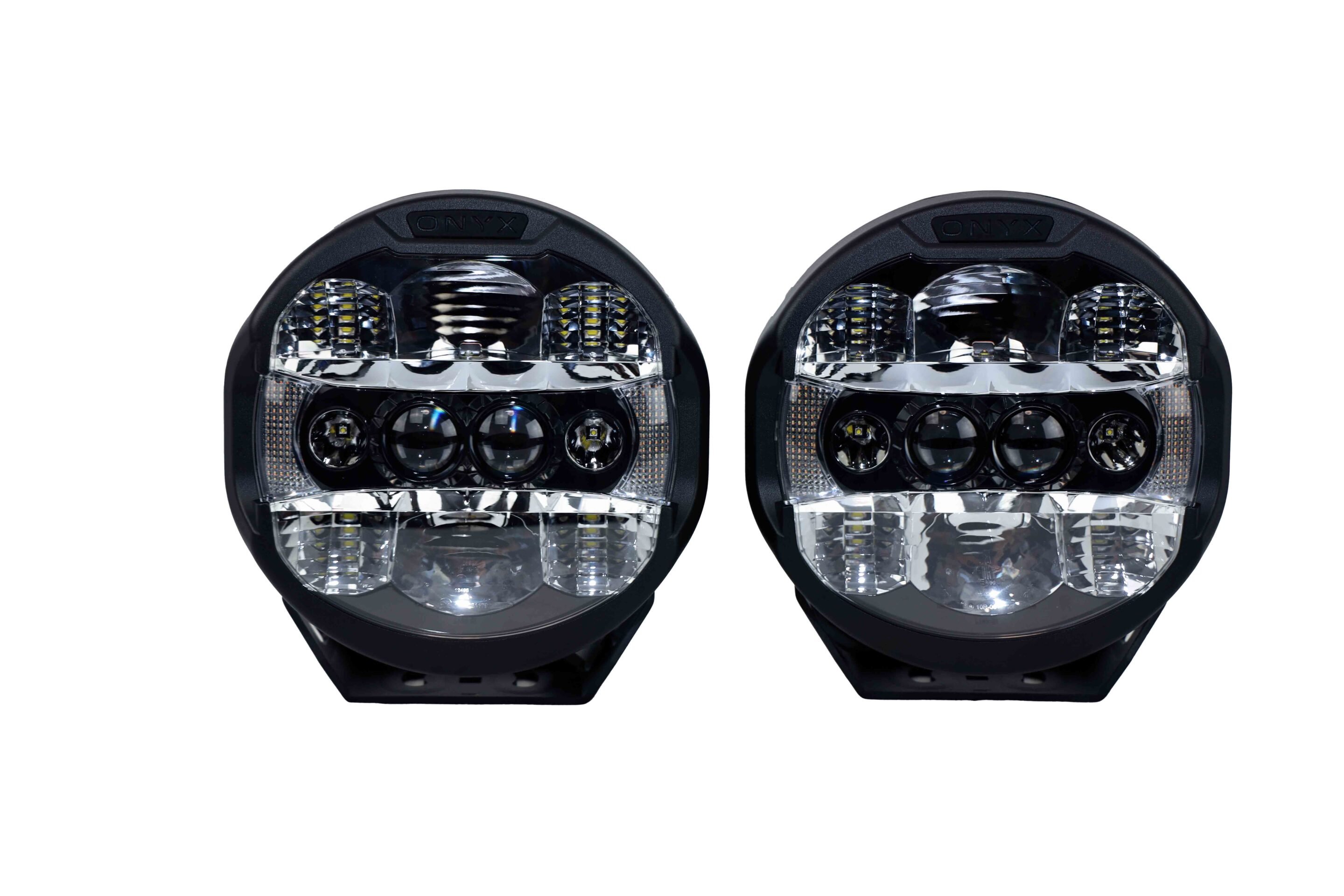
The Onyx lighting systems claim to utilise LED and laser technology. However, only LED units appear visible within the housing. The design, construction, and specifications share a strong resemblance with other lights on the market – though the Onyx carries a notably higher price tag.
The performance of these lights is average. Distance penetration, beam spread and overall consistency fall squarely into the mid-pack. Considering the high price – on par with premium offerings – the value proposition doesn’t quite stack up, especially when others deliver superior real-world and on-paper results.
Upon reviewing the supplied specifications, I’m somewhat confused by the disparity between the claimed performance and what we experienced in real-world testing – the gap is significant and raises questions about the accuracy of the published figures.
Looking at the test photo, you’ll note that the overhanging branch is averagely lit, as are all other measured distances and spread areas. On its own, this light could be considered a reasonable performer – but when compared directly to most of the other lights on test, it simply doesn’t stack up.
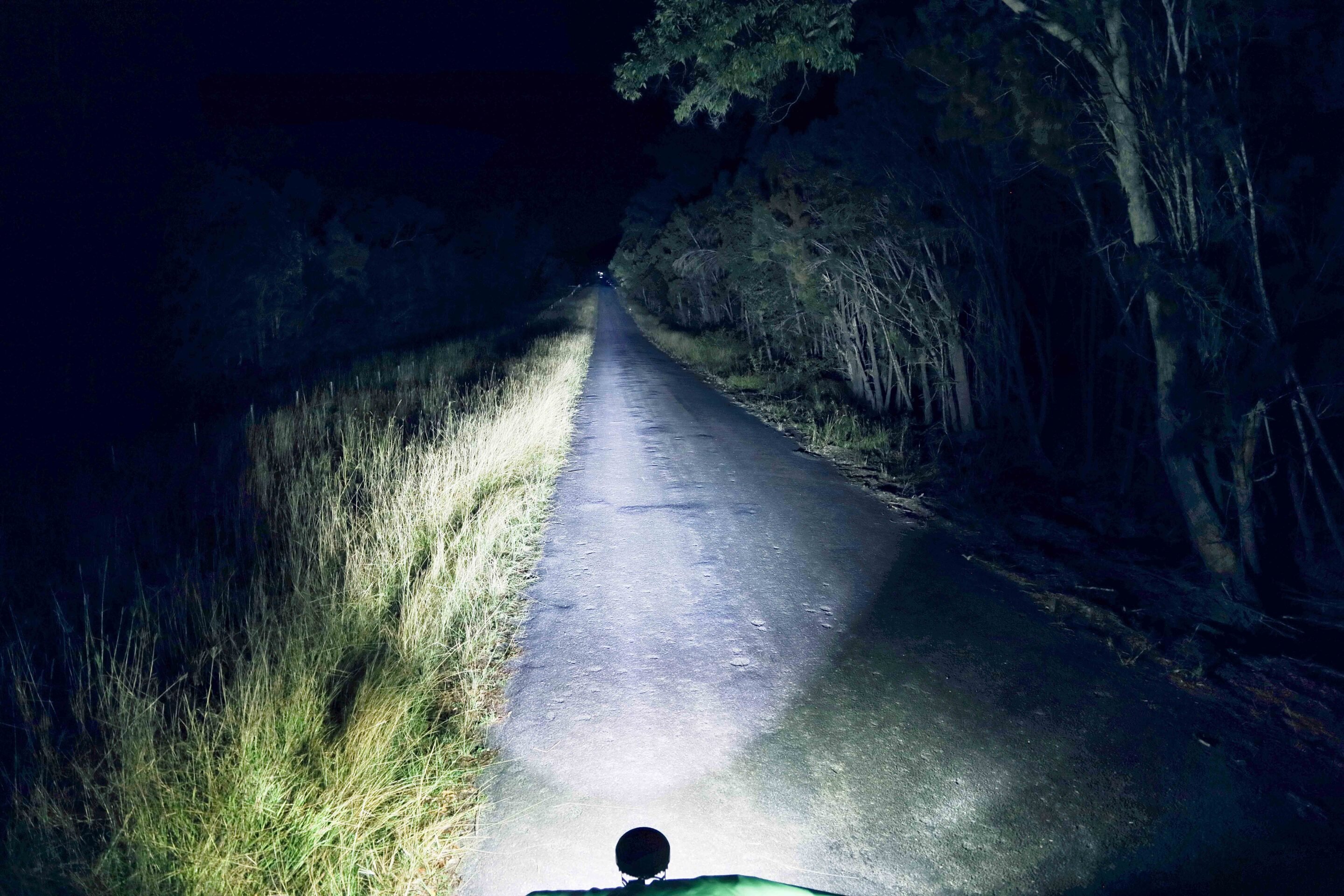
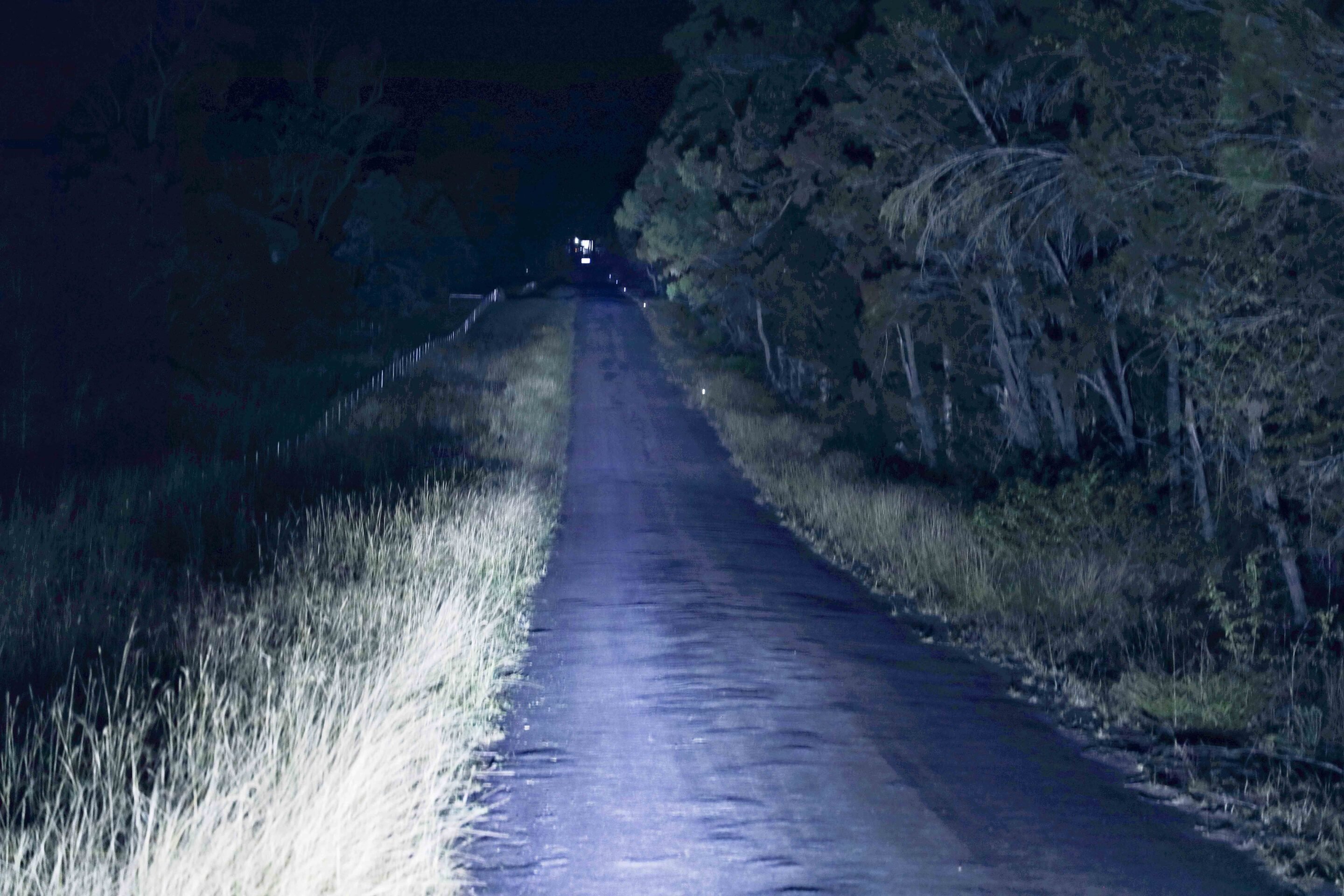
| Light brand/name | Onyx ION-L-9-G2 (pair; includes wiring harness) |
|---|---|
| RRP | $1480 |
| Size | Diameter 230mm; Height 245mm; Width 227mm; Depth 100mm |
| Light pattern (spot, spread or combination) | Combination beam |
| Current draw (amps) | N/A (10-32V) |
| Power (watts) | 150W |
| IP Rating | IP68 & IP69K |
| Colour temperature (Kelvin) | 6000K |
| LED specifications | LED + LASER |
| Effective lumens | 16,000Lm |
| Maximum distance at 1Lux | 1400m |
| Claimed beam distance | 2000m |
| Claimed beam width | 35m |
| Warranty | 3 years |
| Additional notes | N/a |
RoadVision S9 Stealth Halo
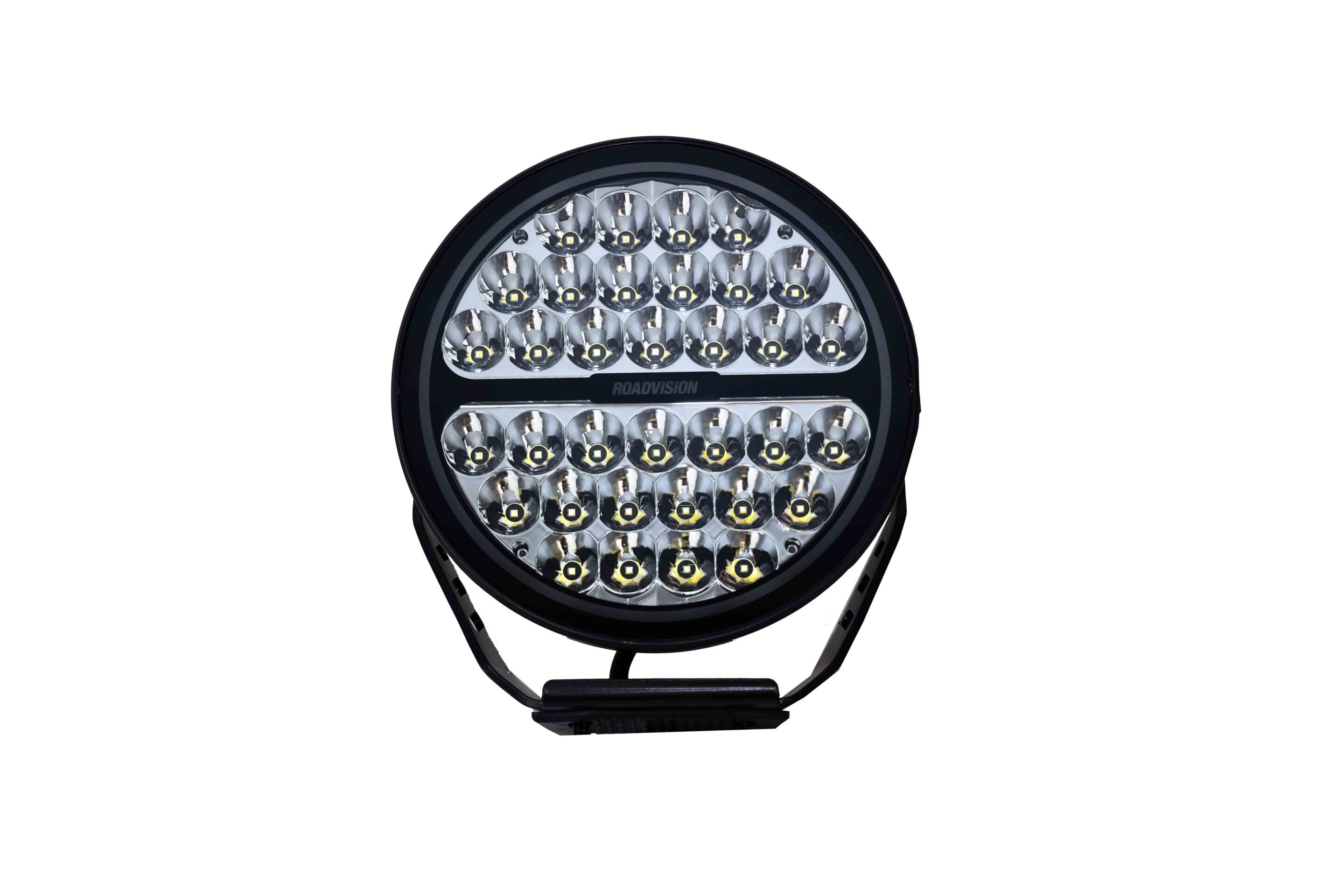
I kinda like it when a manufacturer doesn’t make outrageous claims about a product’s performance. They don’t try to oversell it when it’s clearly up against competitors that are technically superior.
The Road Vision Stealth driving light is that product. It’s a solid offering, sitting in the mid-to-high price range. Its light output is commendable and on par with other mid-spec lights in this test – in fact, its beam pattern is nearly identical to one other unit on test, albeit slightly dimmer.
A triple-bolt mounting system, combined with dual vertical adjustment, puts the Road Vision Stealth on par with most competitors. A straightforward mounting bracket complements the light’s simple design, though it does feature a halo-style daytime running light for added visibility and aesthetics.
Looking at the test photo, the overhanging branch is well lit, crisp and clearly defined, with broad beam patterns casting light to the edges and a long-distance beam reaching far enough to qualify this as a solid all-round performer. However, beyond the wide beam angle, there is noticeable fall-off. In contrast, some other lights cast secondary brightness light out wider, resulting in a better ultra-wide vision.
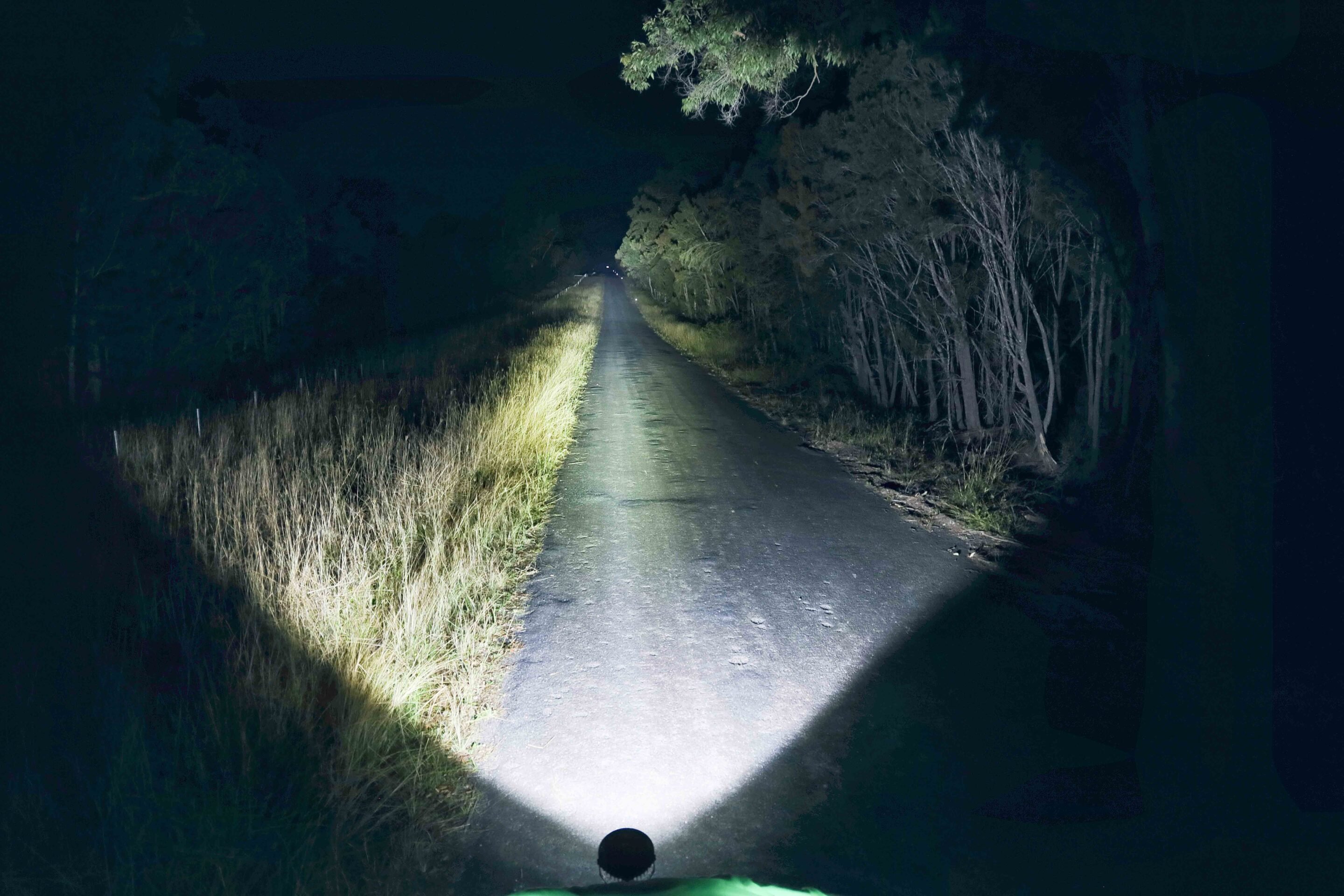
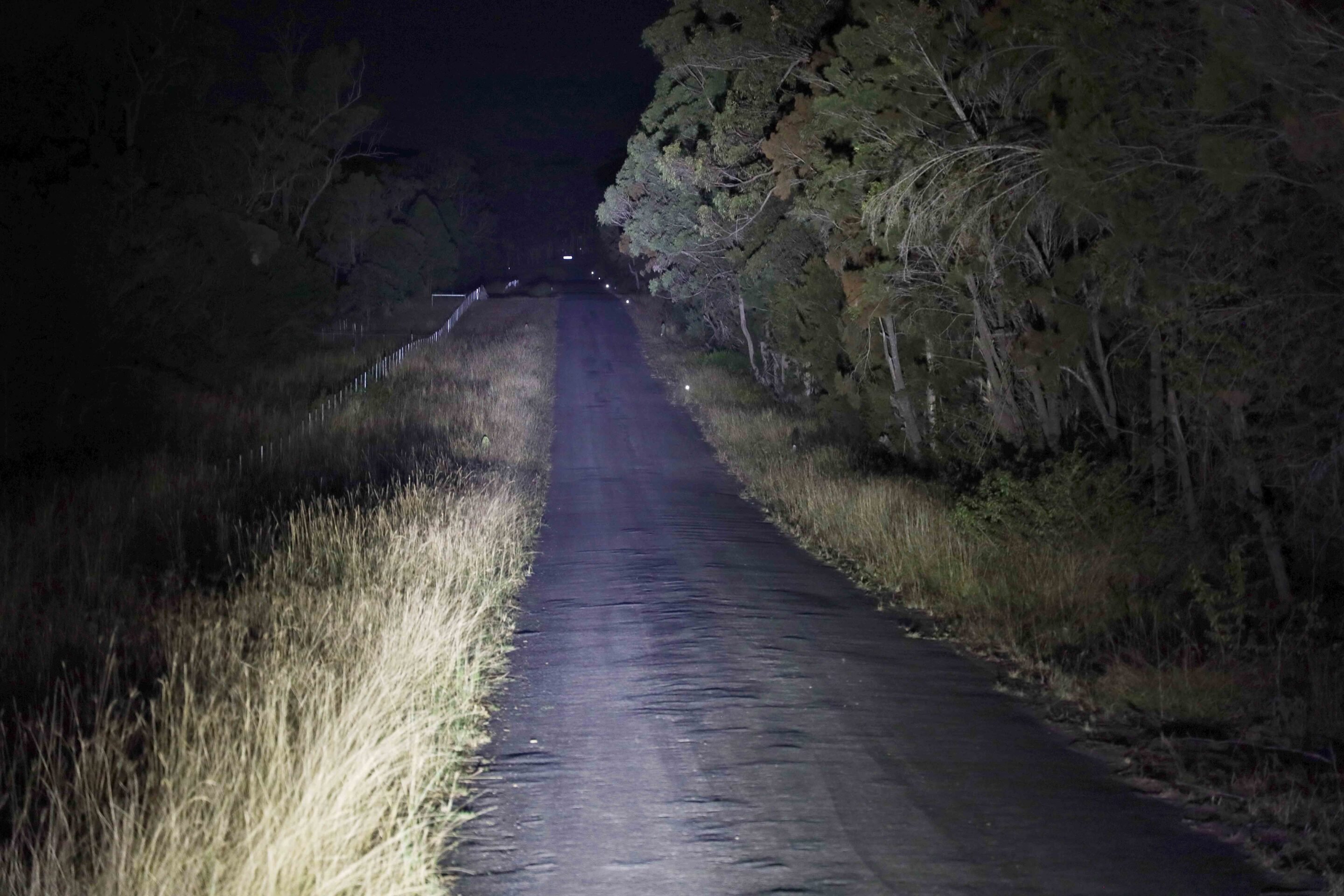
| Light brand/name | Road Vision S9 Stealth Halo |
|---|---|
| RRP | $499 each |
| Size | Diameter 230mm; Height 249mm; Width 238mm; Depth 87mm; Weight 3.6kg |
| Light pattern (spot, spread or combination) | Spot |
| Current draw (amps) | 5.56-10.34A each |
| Power (watts) | 143W each |
| IP Rating | IP67 |
| Colour temperature (Kelvin) | 5700K |
| LED specifications | 34 x 3W Osram |
| Effective lumens | 10,485Lm each |
| Maximum distance at 1Lux | 912m |
| Claimed beam distance | N/a |
| Claimed beam width | N/a |
| Warranty | 7 years |
| Additional notes | N/a |
Stedi Type-X- Sport Plus 8.5
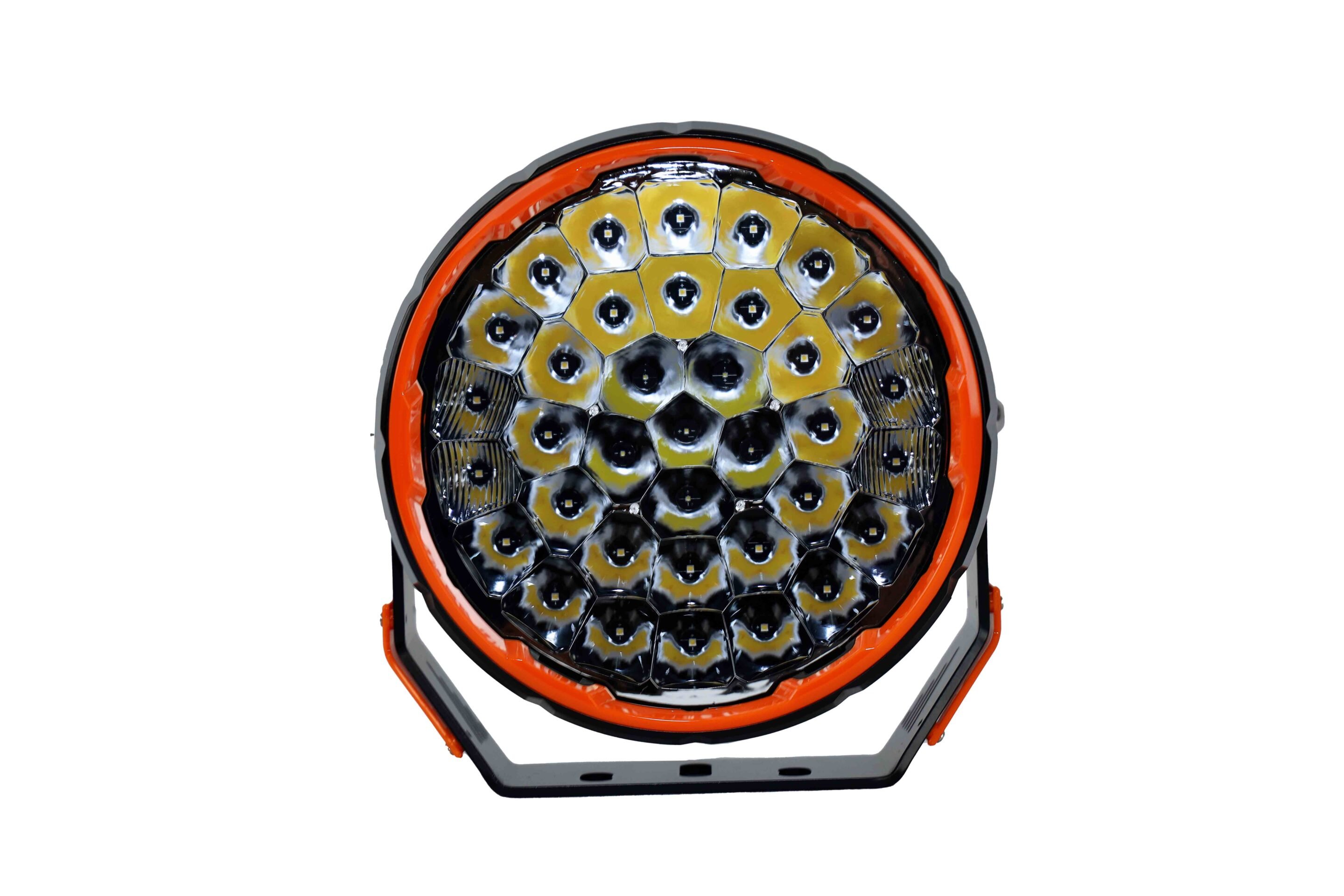
When reviewing this STEDI driving light, be sure you’re looking at the exact model we tested – the Type-X Sport Plus 8.5″. STEDI offers a few variations within the Type-X range, each with different specifications and pricing, so it’s important not to confuse them.
The STEDI Type-X Sport Plus 8.5″ is an excellent light, housed in a familiar design with minor updates over previous generations. A triple-bolt mounting system, dual vertical adjustment with locking bolts, and a straightforward bracket support a light that delivers impressive beam distance and spread.
Pricing is excellent for a premium-brand light, particularly when some competitors cost more than twice as much yet deliver fewer features and less performance.
Looking at the test photo, check out how bright that overhanging branch is, the clearly lit trees along the right-hand side of the road, and the strong illumination reaching the trees further left. It casts an excellent overall light beam, though there’s minimal illumination in the close range before the wide beam angle kicks in. Some other lights manage to light this area up slightly, creating a more complete and inclusive beam pattern.
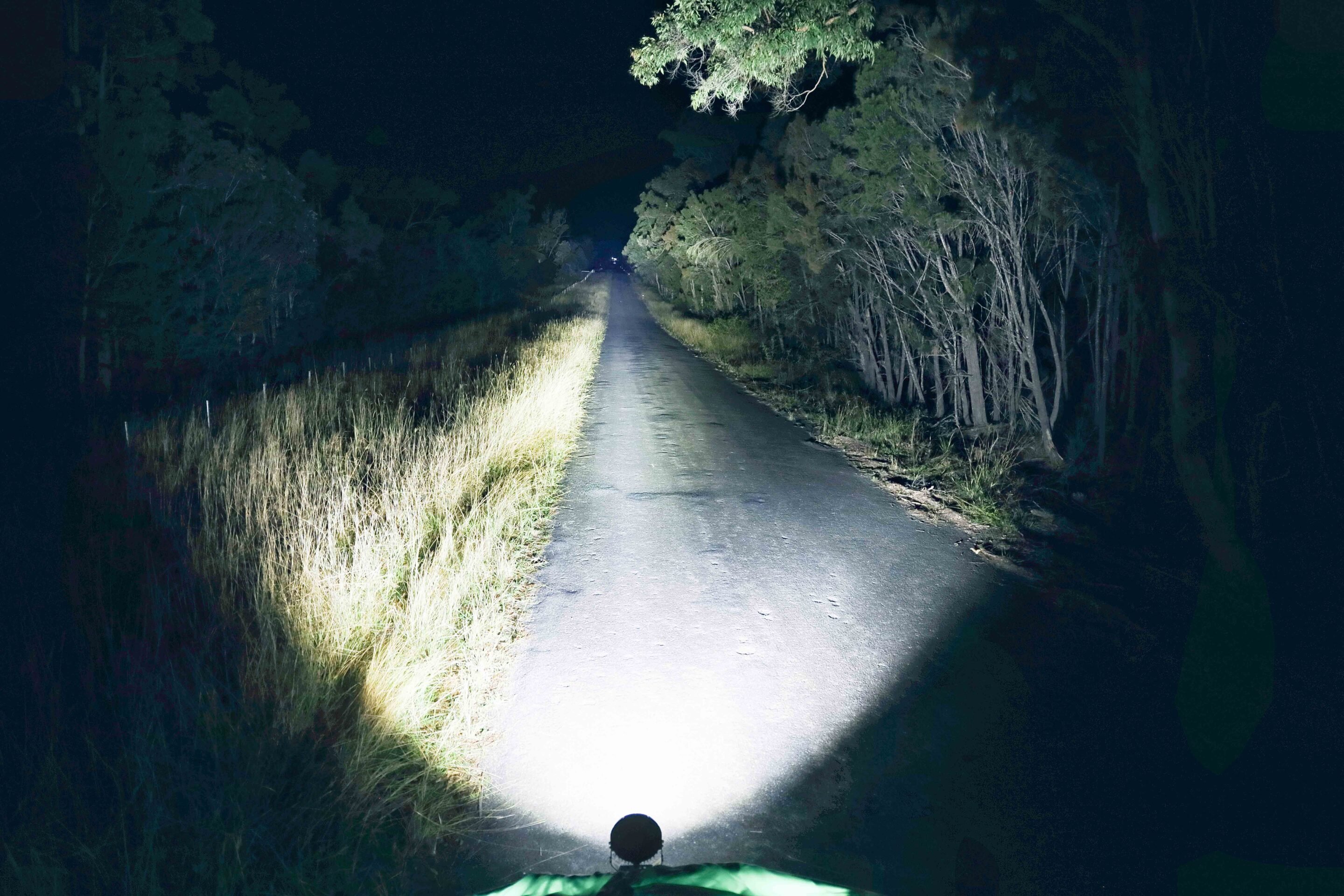
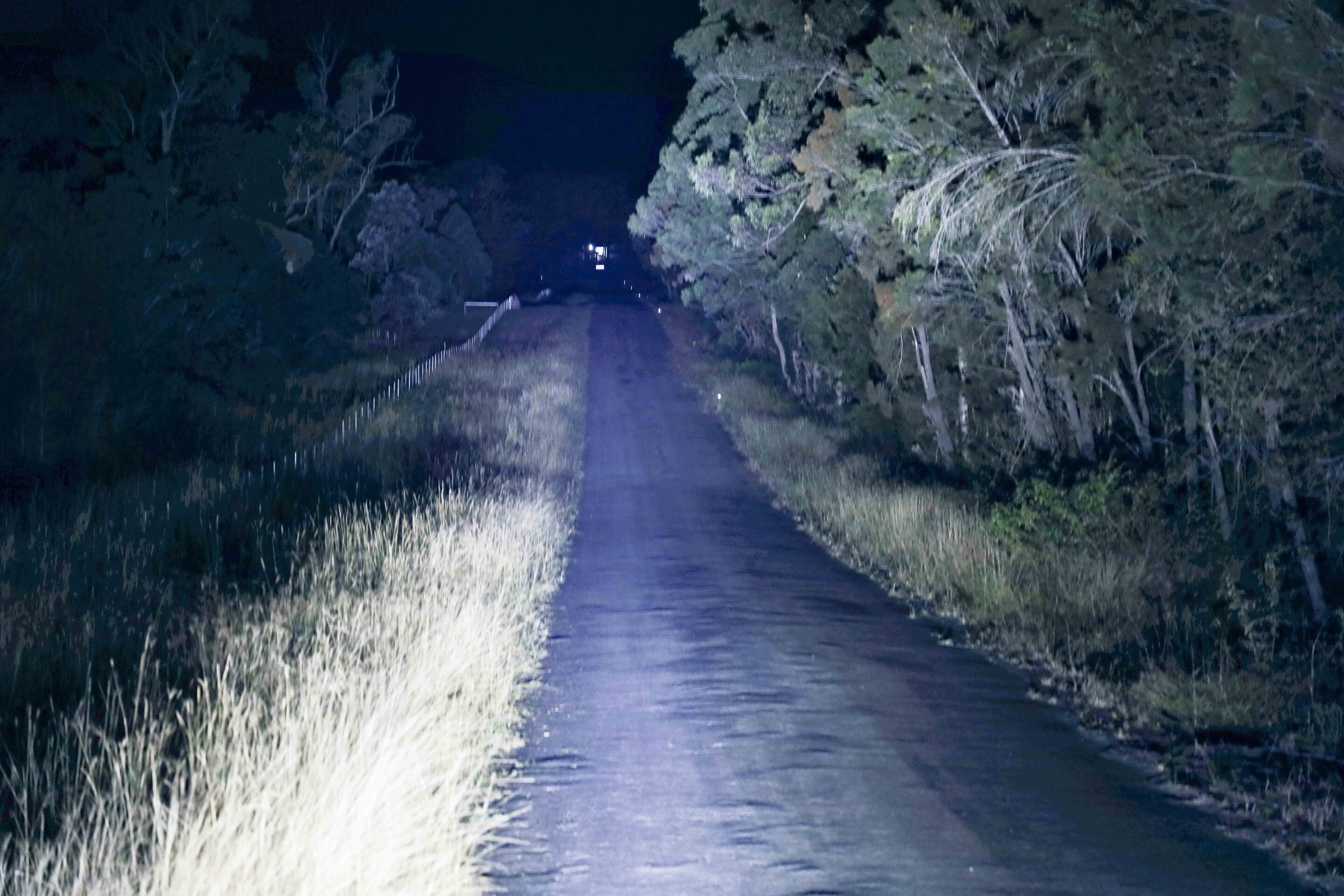
| Light brand/name | Stedi Type-X Sport Plus 8.5 |
|---|---|
| Model | Type-X Sport Plus 8.5-inch (pair) |
| RRP | $599 |
| Size | Diameter 215mm; Height 237.8mm; Width 211.1mm; Depth 83mm; Weight 3.35kg |
| Light pattern (spot, spread or combination) | Combo Beam (32 Spot LED + 4 Flood LED) |
| Current draw (amps) | 4.5A @ 24V (each) |
| Power (watts) | 108W (each) |
| IP Rating | IP68 |
| Colour temperature (Kelvin) | 5000K |
| LED specifications | 30 x OSRAM P8 + 6 x CREE XP20 |
| Effective lumens | 24,770Lm (Pair) |
| Maximum distance at 1Lux | 1192m (Pair) |
| Claimed beam distance | NA |
| Claimed beam width | 76m |
| Warranty | 5 years |
| Additional notes | N/a |
Tru Vision
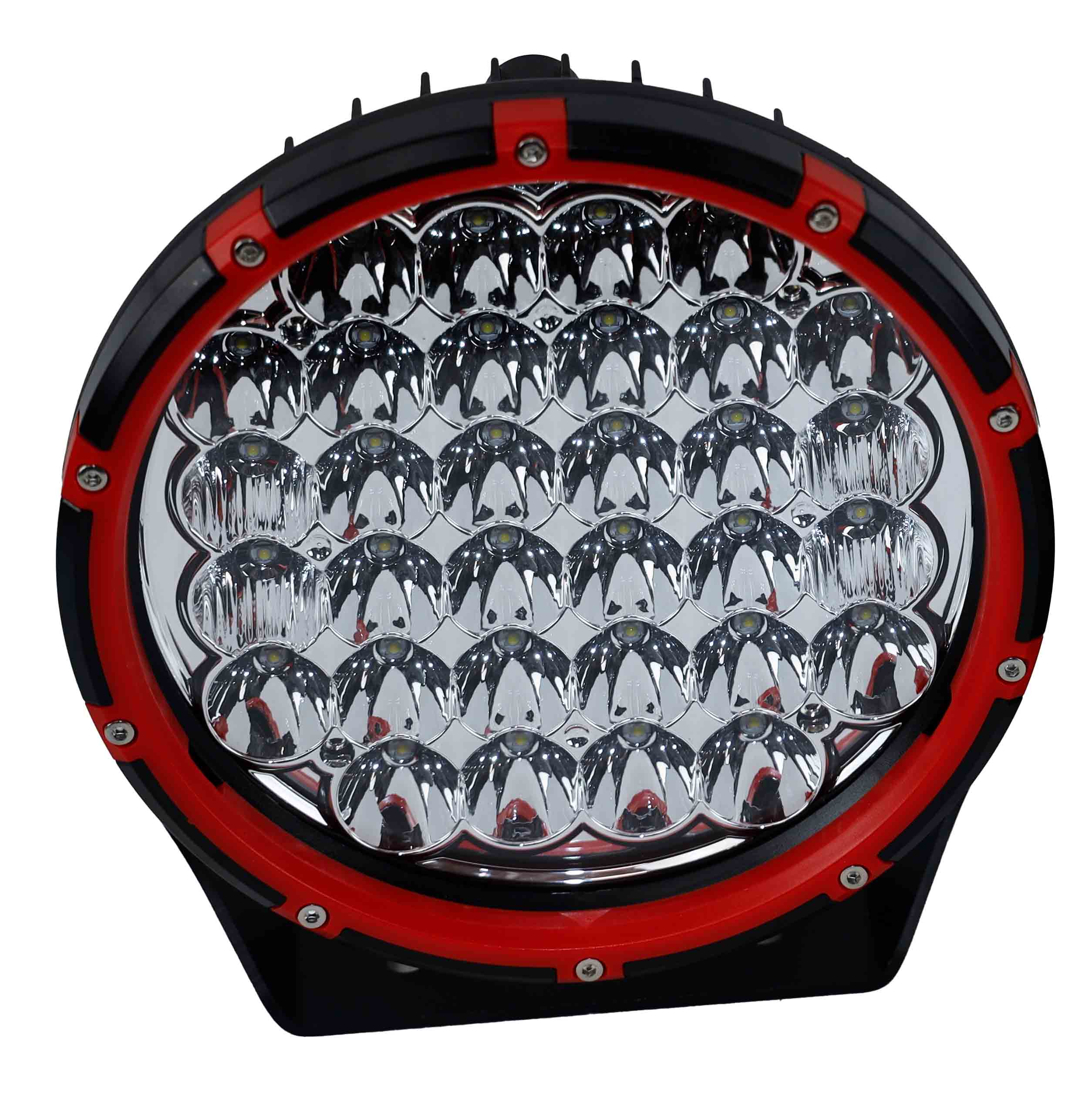
I’ve checked, double-checked, and even asked others to check the pricing of these driving lights. These are by far the cheapest on test, but wait for it… a damn good light. Yep, forget about pricing and look at the beam of this light – it impresses all round. Sure, you can pore over specifications, compare with others, but at the end of the day… night… these lights pack some serious punch.
The standard triple bolt bullbar fitting, combined with dual vertical height adjustment bolts and a simple metal mount, puts this light on par with many others. Simple, excellent results make this light a must-look-at product for those on a budget.
Looking at the test photo, everything is well lit. The overhanging branch, both left- and right-hand side tree lines, plus the long distance, is more than you could expect from a light at this lower-end pricing. The only thing missing is the ultra-wide foreground lighting that some others cast. Seriously, the pricing of these lights is super short-pocket friendly!
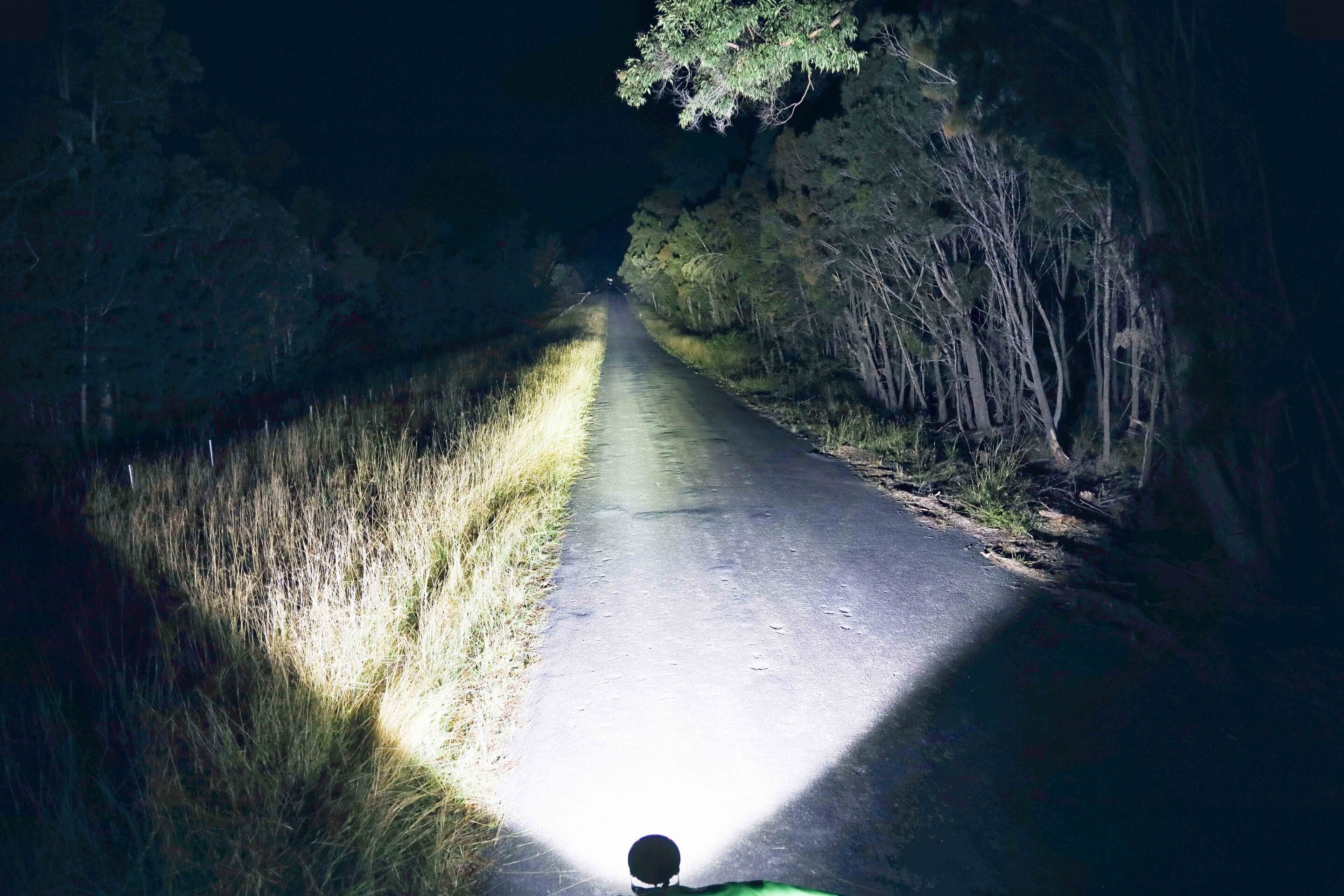
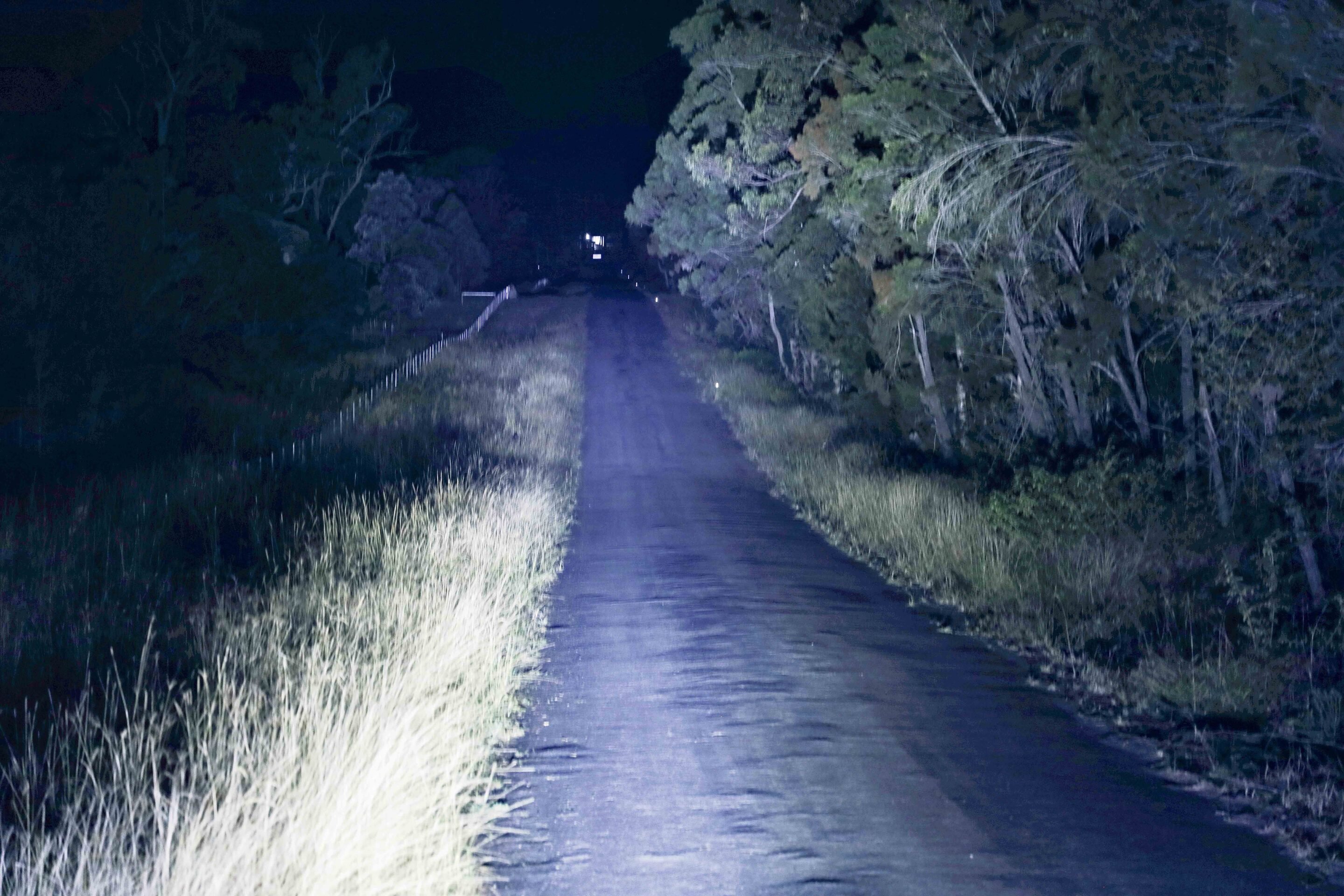
| Light brand/name | Tru Vision |
|---|---|
| RRP | $249 (pair) |
| Size | Diameter 220mm; Depth 92mm; |
| Light pattern (spot, spread or combination) | Spot |
| Current draw (amps) | 7.4A @ 12V |
| Power (watts) | 160W |
| IP Rating | IP68 |
| Colour temperature (Kelvin) | 6000 |
| LED specifications | 32 x 5W |
| Effective lumens | 11,000Lm |
| Maximum distance at 1Lux | 1150m (pair) |
| Claimed beam distance. | 1150m (pair) |
| Claimed beam width. | 55m (pair) |
| Warranty | 1 year |
| Additional notes | Includes wiring harness + two blackout covers |
Ultra Vision Nitro 180 Max
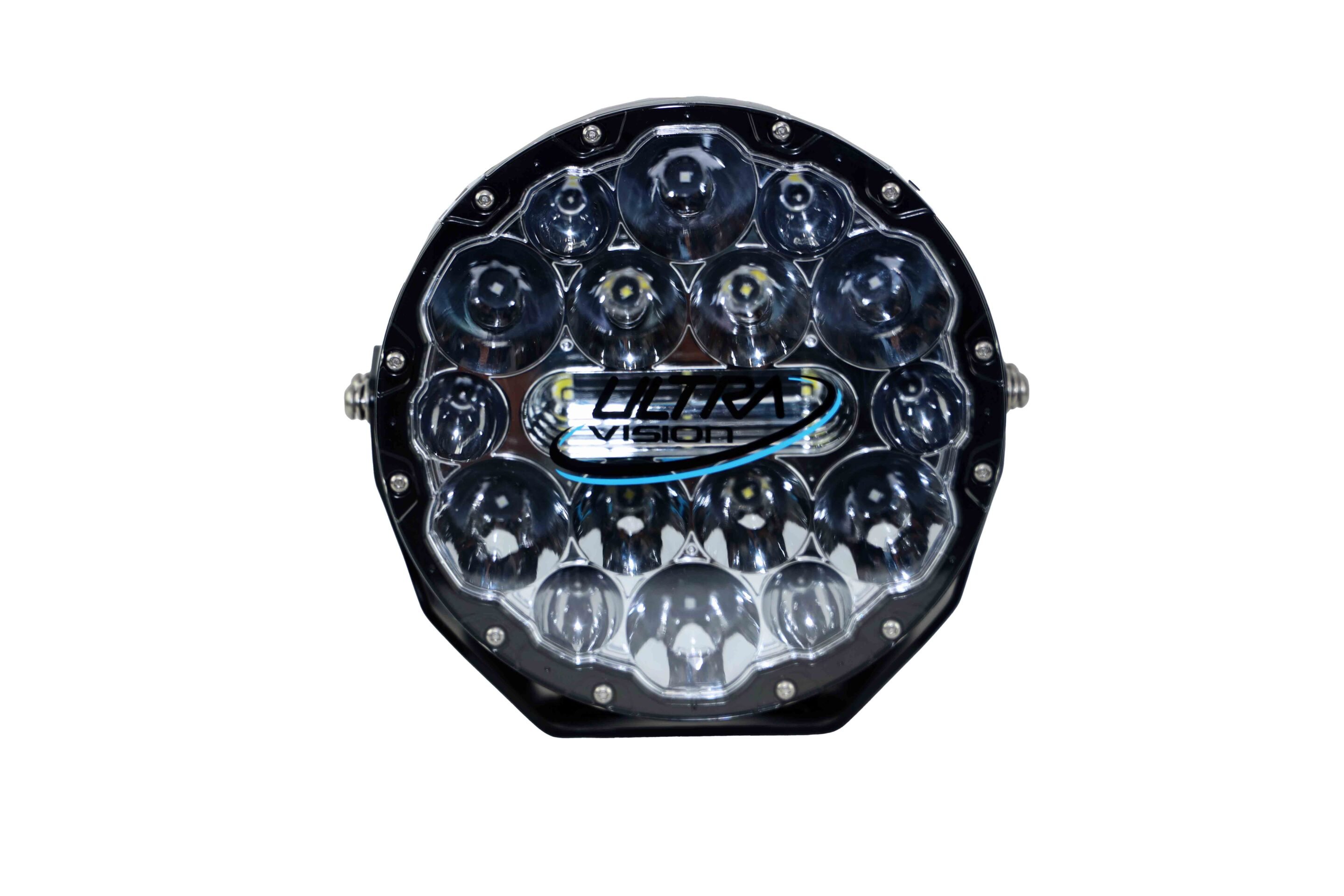
The Aussie-made Nitro 180 Max lights from Ultra Vision sit at the top of the table for lighting performance – and pricing. But with that premium price comes premium componentry, quality engineering, and a product built to go the distance.
They feature a 20 per cent light output mode that, at the push of a button, cuts power by 80 per cent. This provides visibility greater than standard high beams, while reducing glare from roadside sign reflections.
A big plus is the choice of colour temperature, with both the standard 5700K (used during our testing) and a 4500K option available for those seeking a more eye-friendly light output.
The ultra-long 2200-metre claim of usable light is one of the longest we’ve seen, but in real-world driving, how useful is that distance when compared to effective short-, mid- and long-range illumination?
Looking at the test photo, everything is well lit. Both sides of the road are illuminated, the overhanging branch is partially visible, and the long-distance beam is superb. The ultra-wide, close-range lighting delivers excellent side vision, which is crucial for spotting wildlife before they dart onto the road. This broader spread beyond the central beam is what helps prevent a strike.
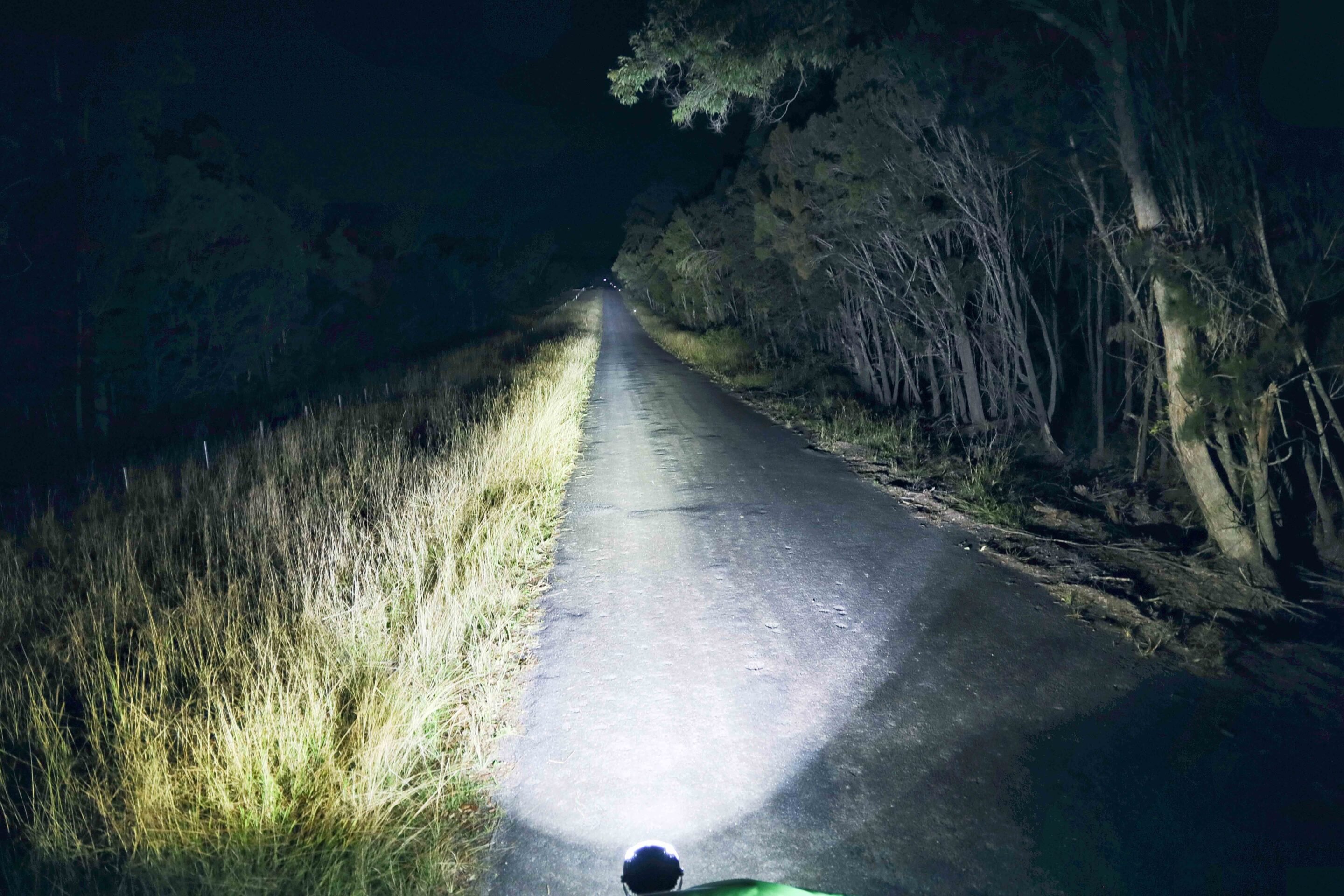
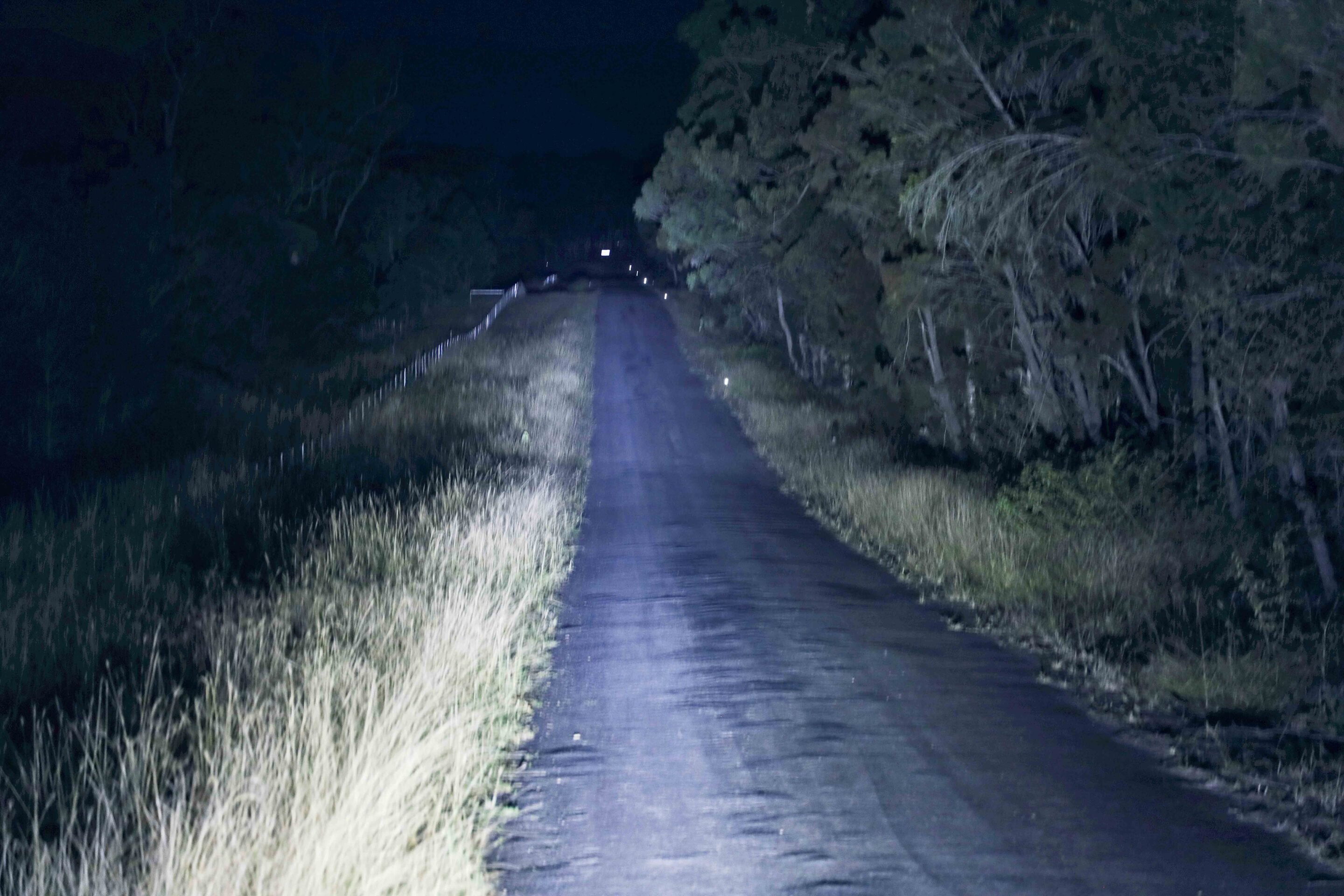
| Light brand/name | Ultra Vision Nitro 180 Max 9-inch |
|---|---|
| RRP | $1709 |
| Size (diameter x depth) | Diameter 249mm; Height 244mm; Width 249mm; Depth 92mm; Weight 3.45kg |
| Light pattern (spot, spread or combination) | Combination |
| Current draw (amps) | 27A in high mode and 4.7A in low mode @ 13.5V (per pair) |
| Power (watts) | 180W (per lamp) |
| IP Rating | IP68 |
| Colour temperature (Kelvin) | 5700K (used for testing); Also available in 4500K |
| LED specifications | 19 x High Power LEDs (per lamp) |
| Effective lumens | 23,065Lm ( pair) |
| Maximum distance at 1Lux | 1 Lux at 22200m |
| Claimed beam distance | Usable light: 2200m |
| Claimed beam width | 170m |
| Warranty | 5 years |
| Additional notes | Includes the Hi/Lo function that reduces power output to 20 per cent when driving through built-up areas; Proudly Australian owned |
Verdict: All of the winners
Remember, each photo was taken with a single driving light in use — no vehicle high or low beams were active, so there’s no interference or enhancement from the vehicle’s standard lighting.
Any driving light that appears patchy or lacking in short-distance spread could well be complemented by your vehicle’s high beams, depending on their quality. That said, the photos presented here allow a fair comparison across all lights under equal conditions.
Let’s be clear — no single light on test is the outright best at everything. Some offer excellent all-round performance, others excel at long-range penetration, while some shine in their spread. For many buyers, it may simply come down to budget and acceptable performance. So, in the interests of catering to a wide range of needs, we’ve split the awards into: Overall Winner, Best Long-Distance Beam, Best Spread Beam, and Best Value for Money.
Best Value for Money: TruVision
We couldn’t go past this light for its outstanding performance combined with an unbeatable price. As the most affordable light on test, the simply engineered housing and basic mounting bracket deliver exceptional results. In fact, it outshines many more expensive competitors with its impressive bang-for-buck.
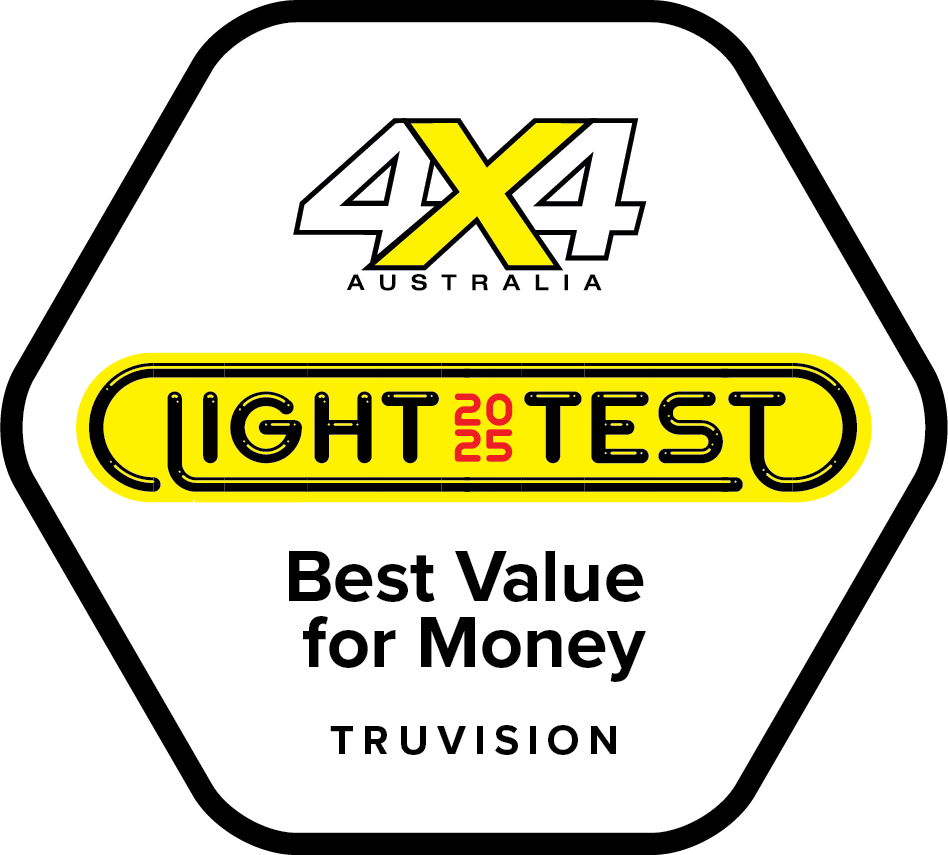
Best Long-Distance Beam: Lightforce Beast
With its selectable three-mode system, including an impressive Spot mode, the Lightforce Beast stands out for its real-world performance. While it doesn’t claim the longest beam distance on paper, its actual output is both intense and usable far beyond what most drivers could realistically take advantage of. A superb combination of smart tech and build quality.
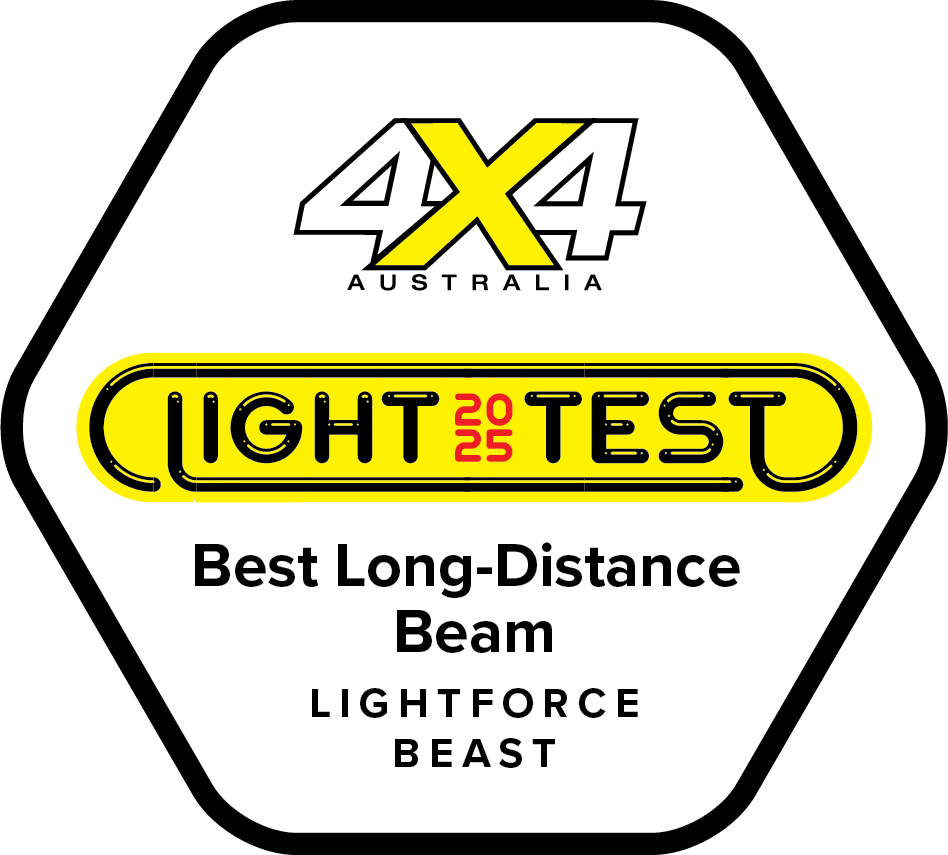
Best Spread Beam: Bushranger VLI
With the supplied clip-on spread beam cover in place, the Bushranger VLI delivers a superbly wide and evenly cast beam pattern. It’s perfect for lighting up the verges and spotting wildlife lurking well off to the side of the road. Add to that the clever Variable Light Intensity system, controlled via an 8-position in-cab dial, and you’ve got a highly adaptable performer.
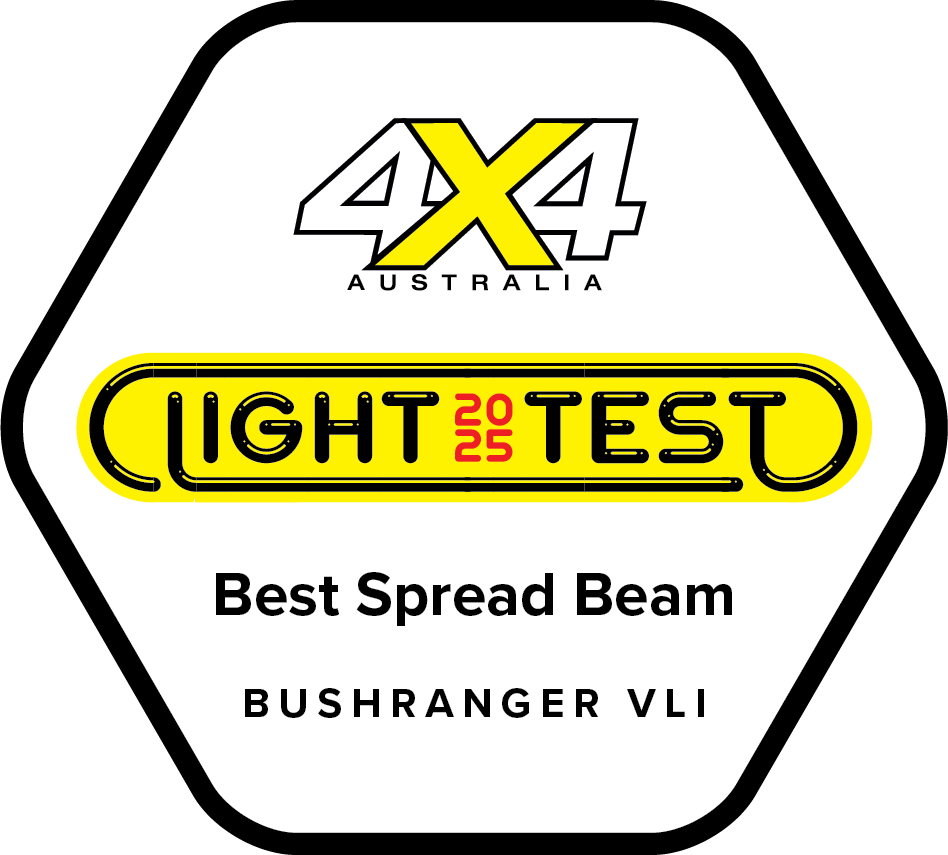
Overall winner: Lightforce Beast
Taking top honours requires more than just impressive light output – it demands smart design, ease of installation and adjustment, thoughtful features, and strong overall value. The Lightforce Beast ticks all those boxes. With brilliant illumination across short, medium and long distances, and the ability to switch between spot, spread and Beast modes via an in-cab controller – no clip-on filters required – it’s a class act from every angle.
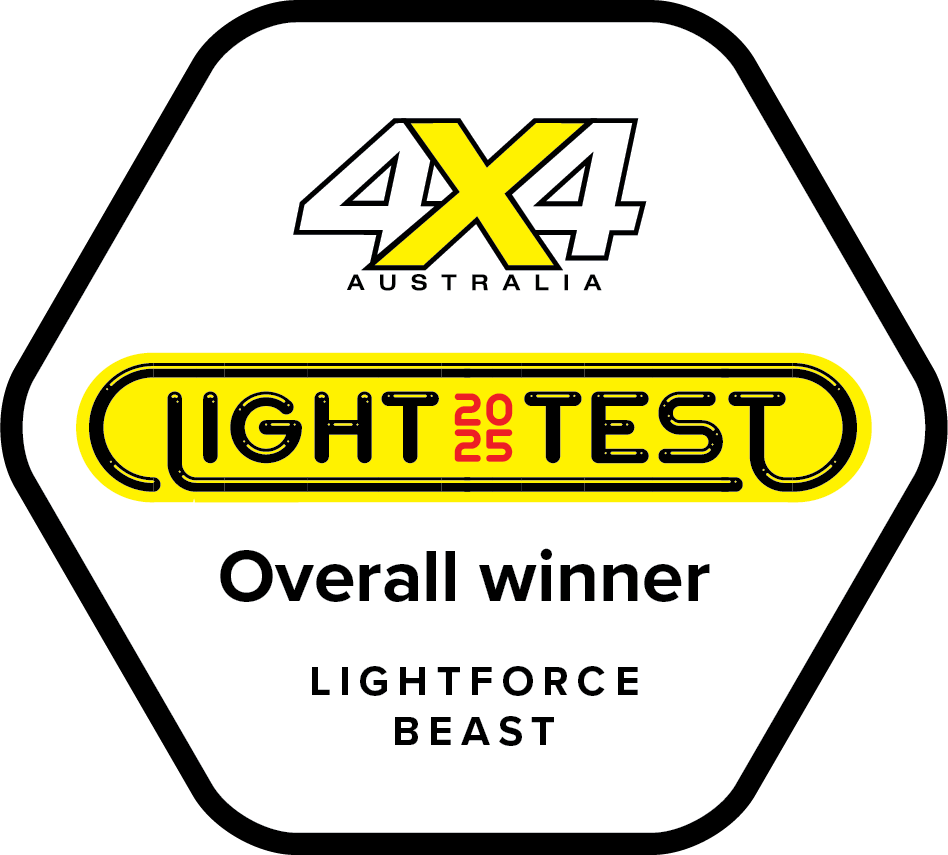
Add to that the fact they’re far from the most expensive – sitting comfortably in the mid-to-upper price bracket – and the Lightforce Beast makes a compelling case for anyone wanting premium performance at a fair price. And while beauty is said to be only skin deep, I’ll go out on a limb and say these lights are visually stunning too.
That beastly beam brings to mind the line from a certain animated classic: “I want adventure in the great wide somewhere.” That’s exactly what you’ll get when you bolt a set of these lights onto your rig.
We recommend
-
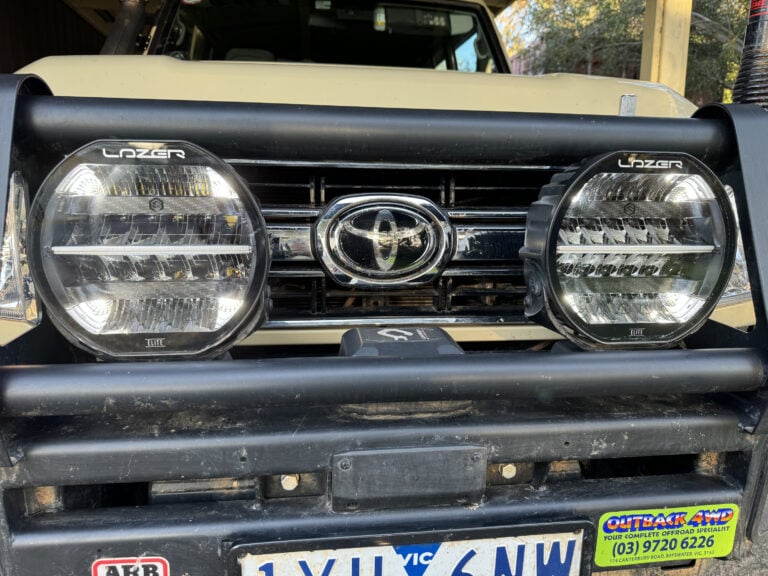 Gear
GearLazer Sentinel 9-inch Elite LEDs put to the test
Good driving lights don’t come cheap, but these Lazer Sentinel 9-inch Elites are well worth the spend
-
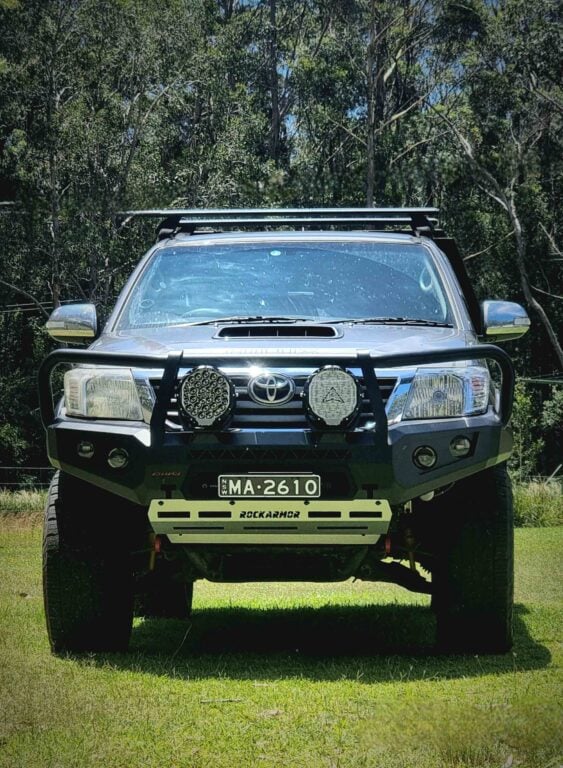 Gear
GearAltiq Rogue 8.5-inch LED driving lights put to the test
A versatile lighting system that can be quickly and easily tailored to suit different environments
-
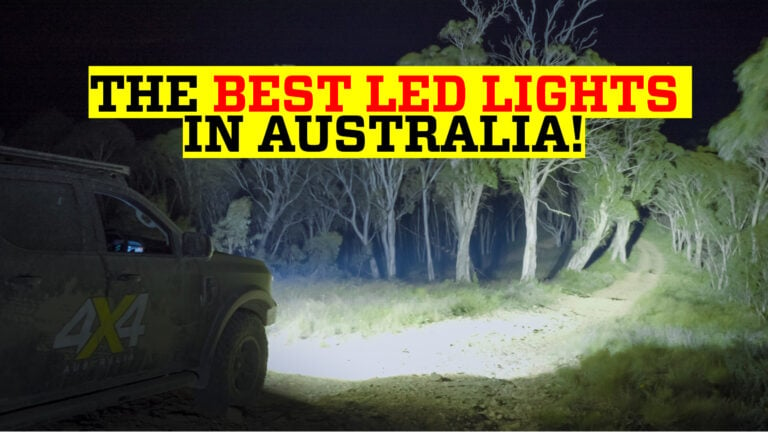 Gear
GearThe best LED driving lights in Australia in 2024
Shining a light on the best LED driving lights on sale in Australia

